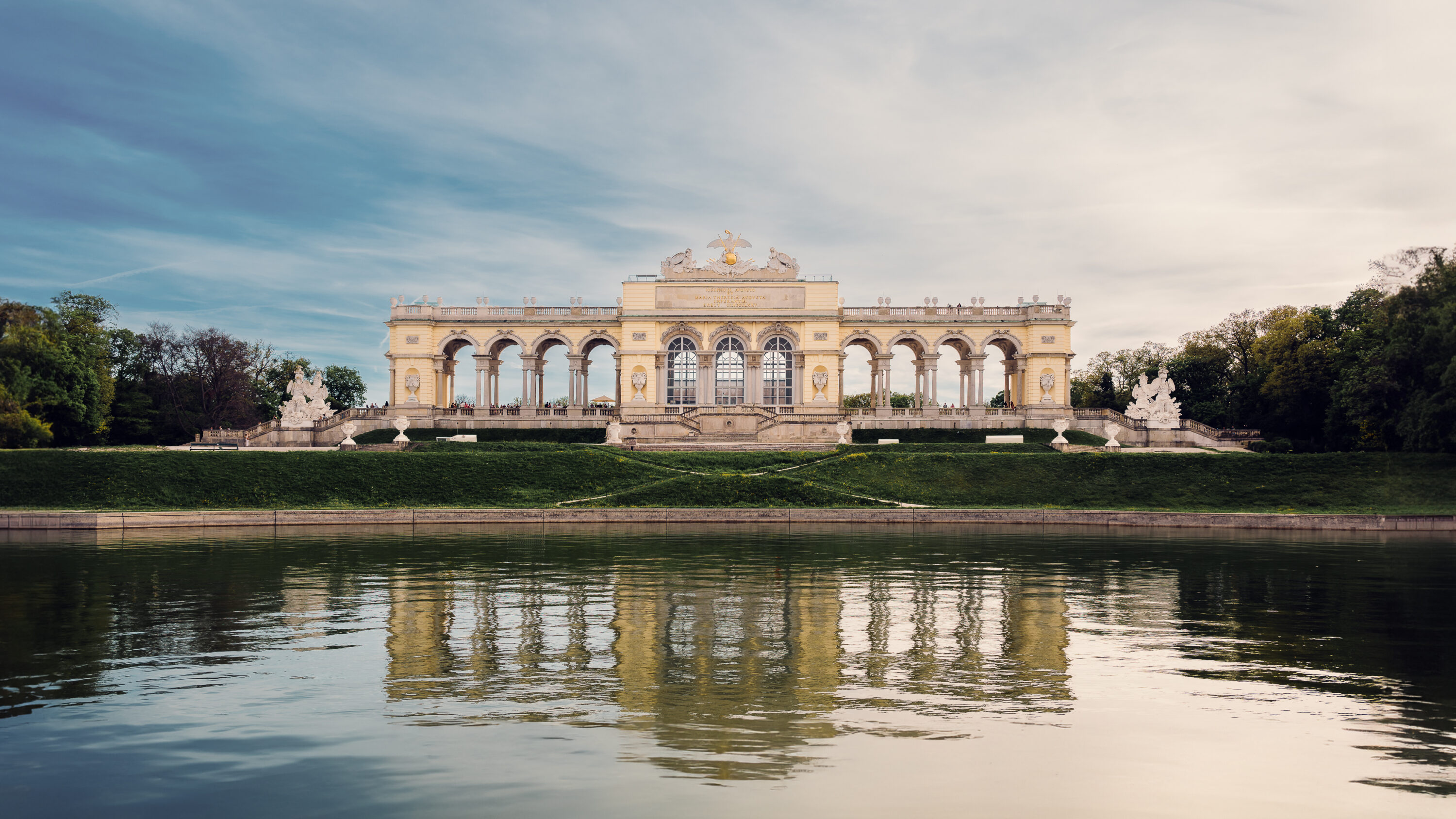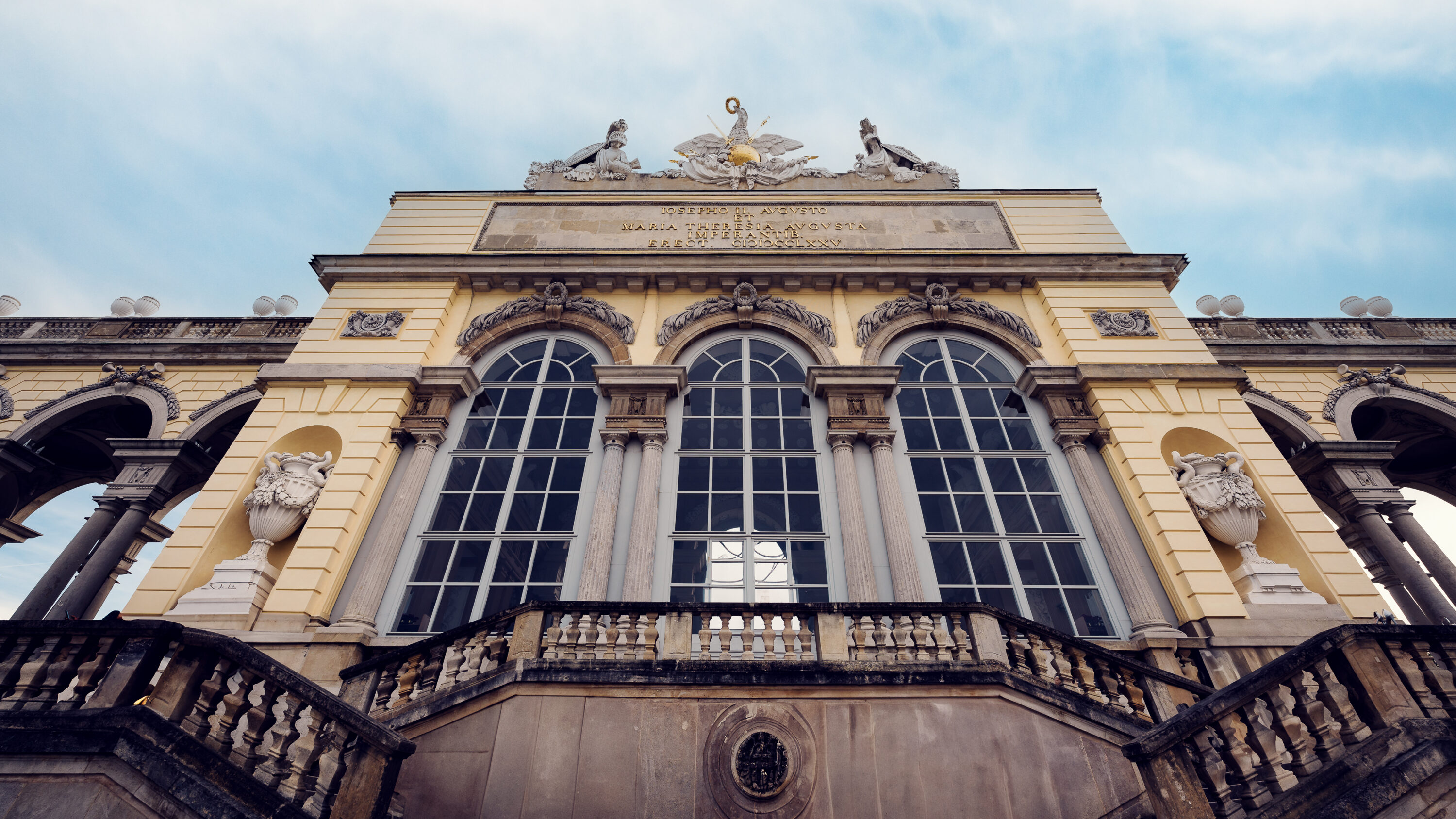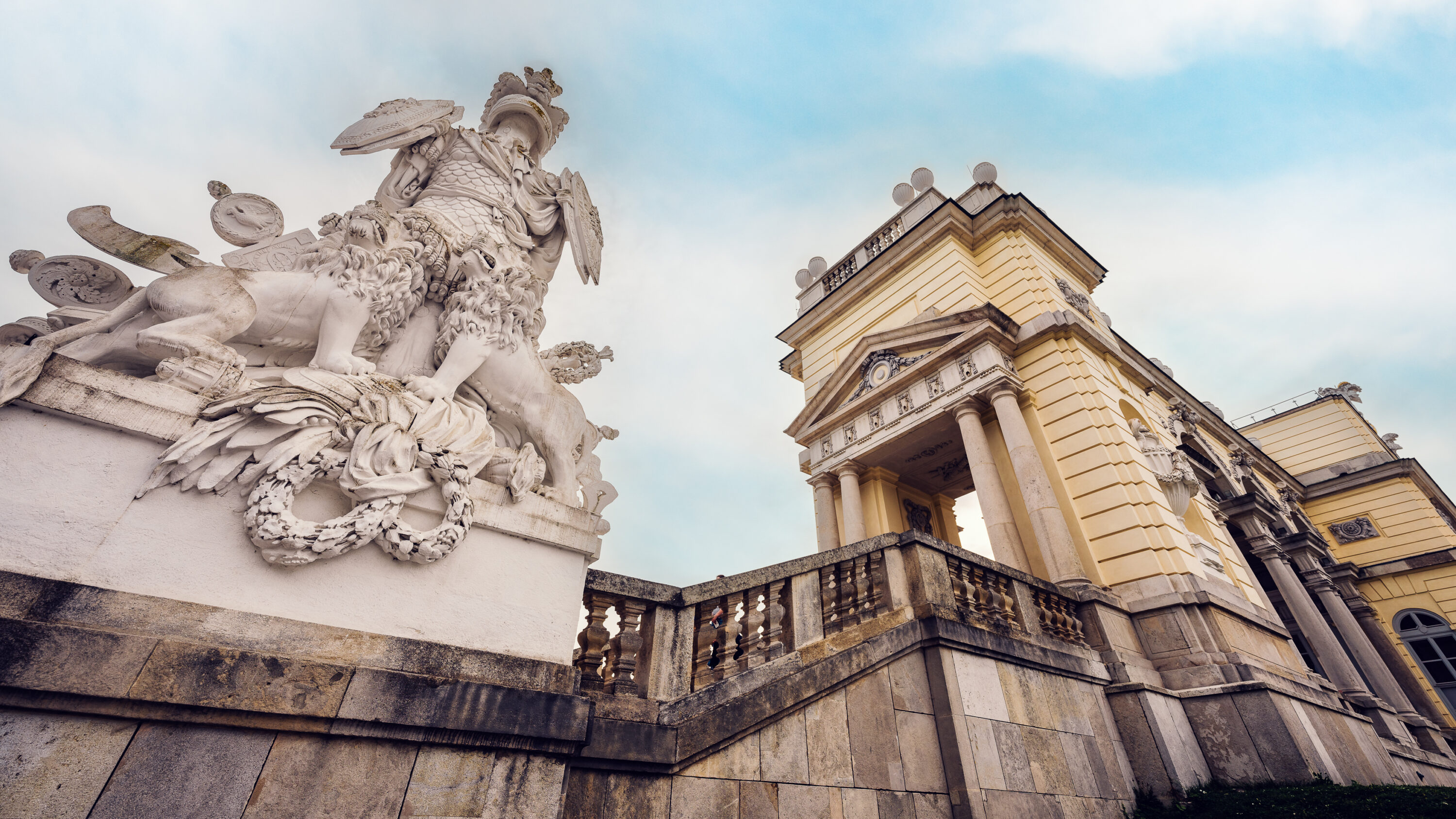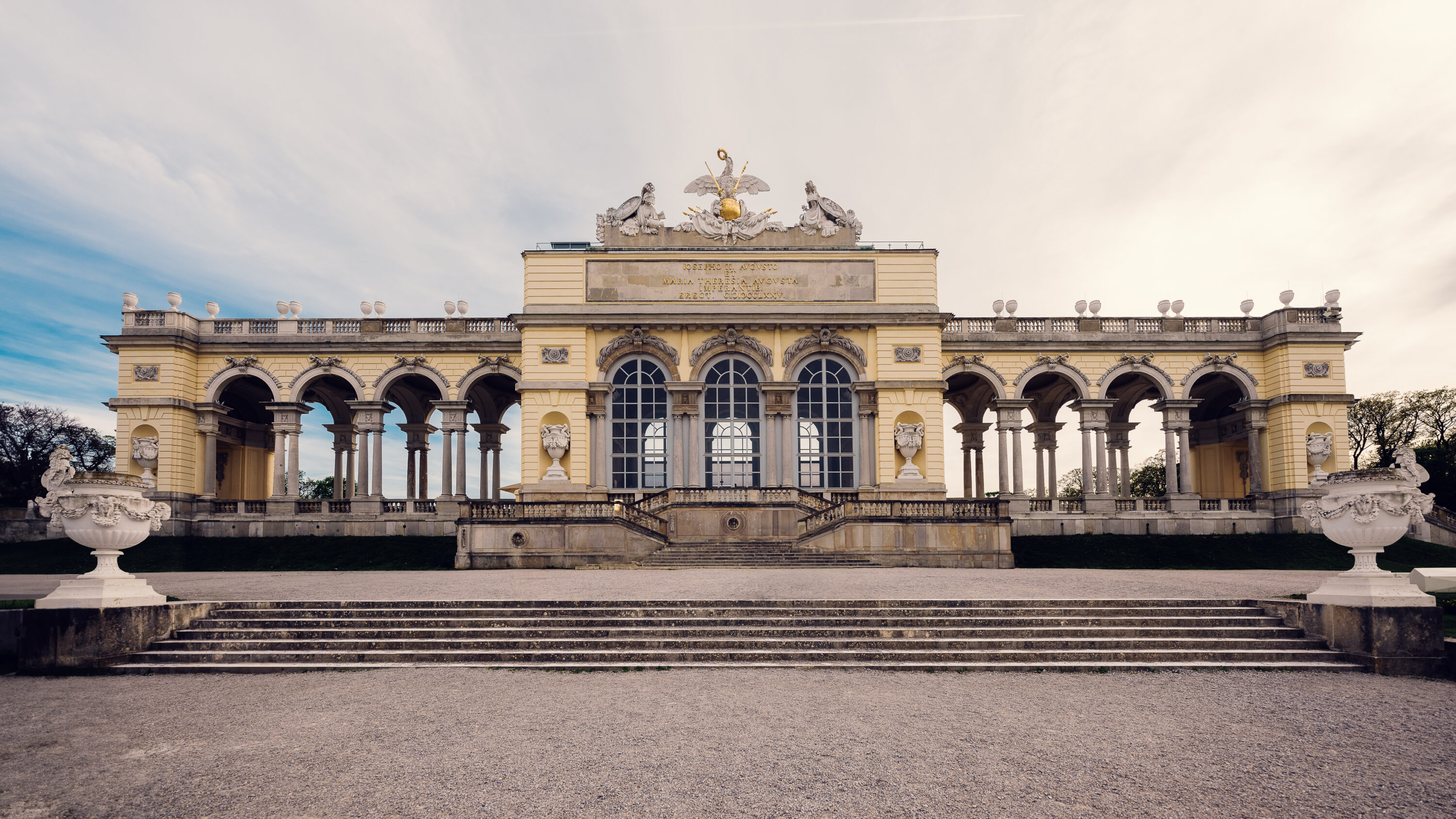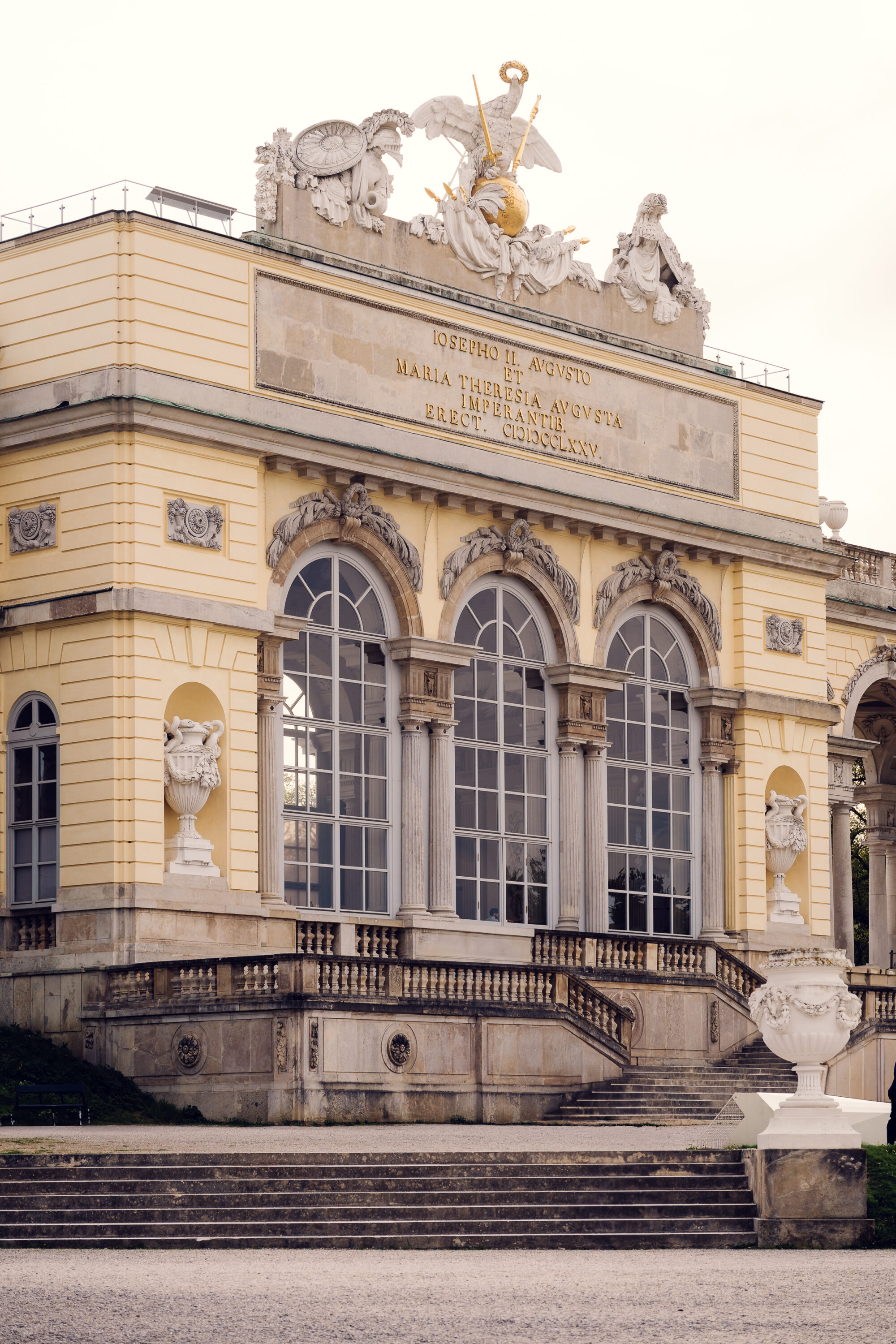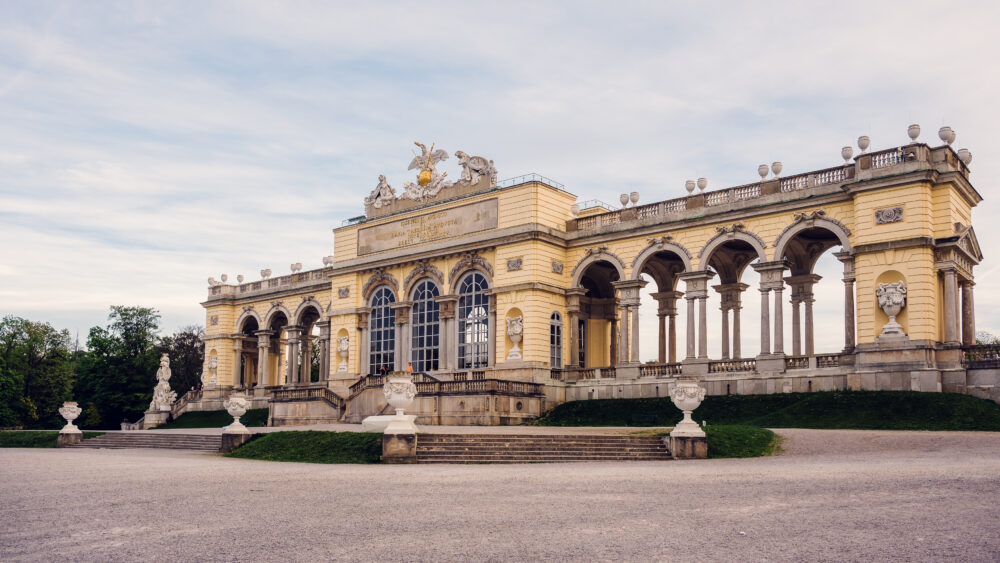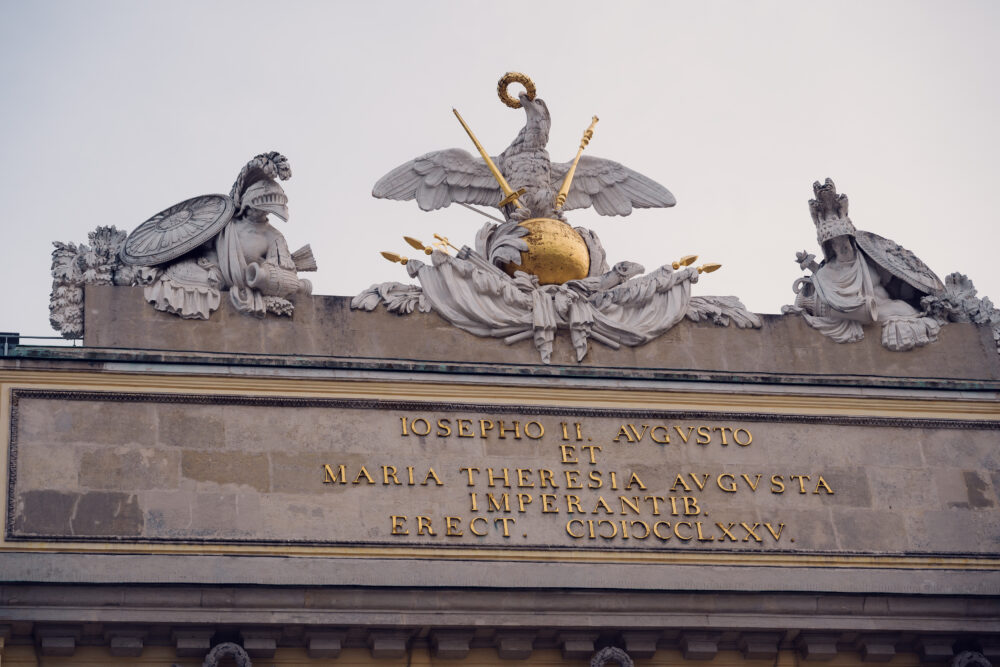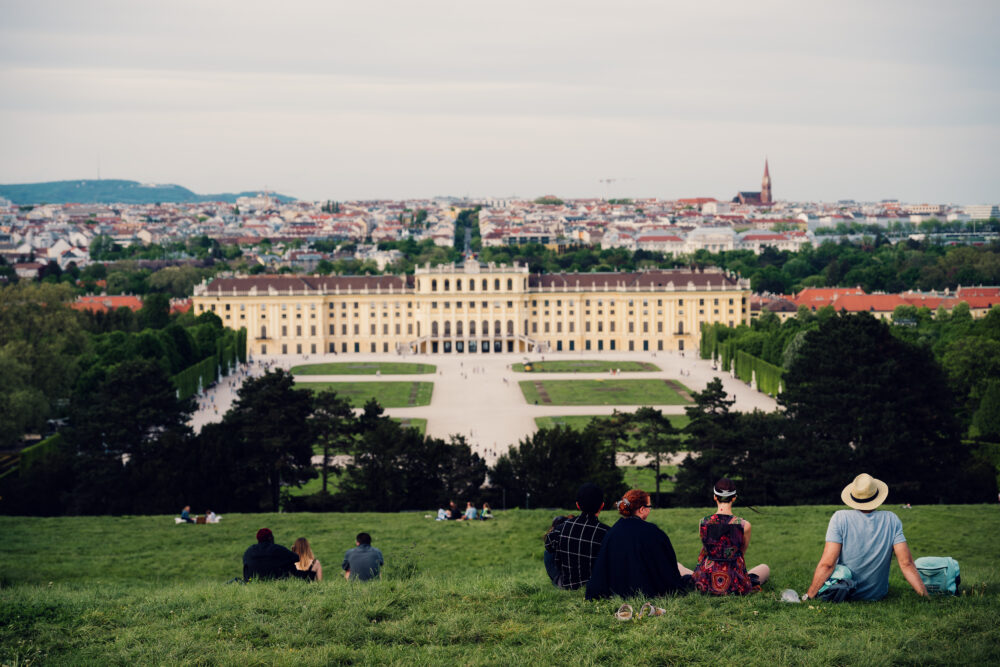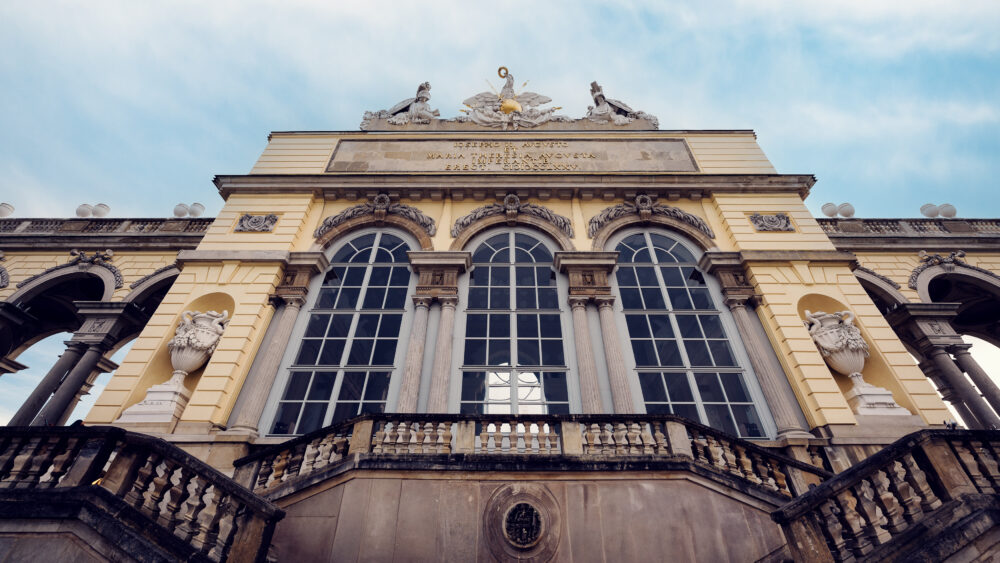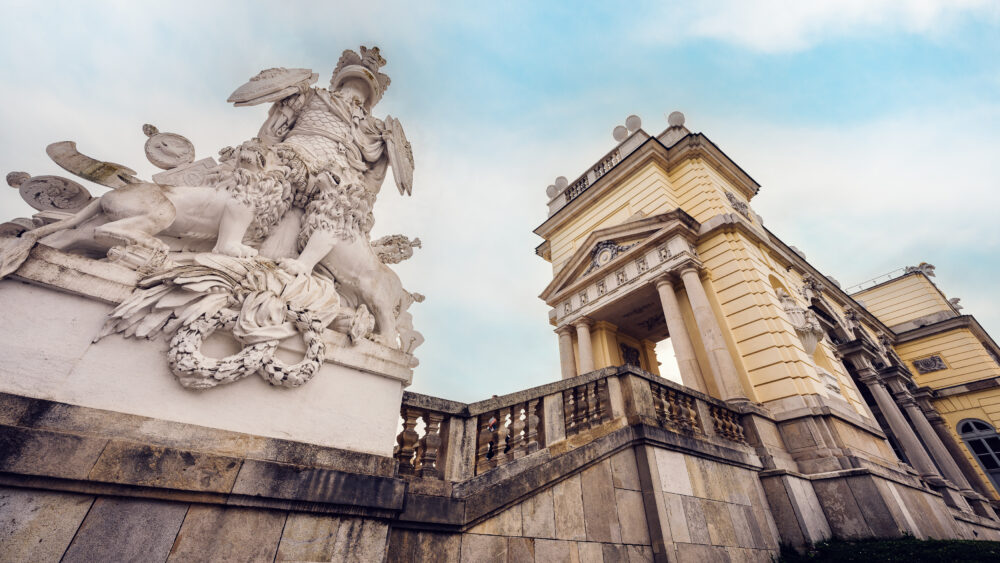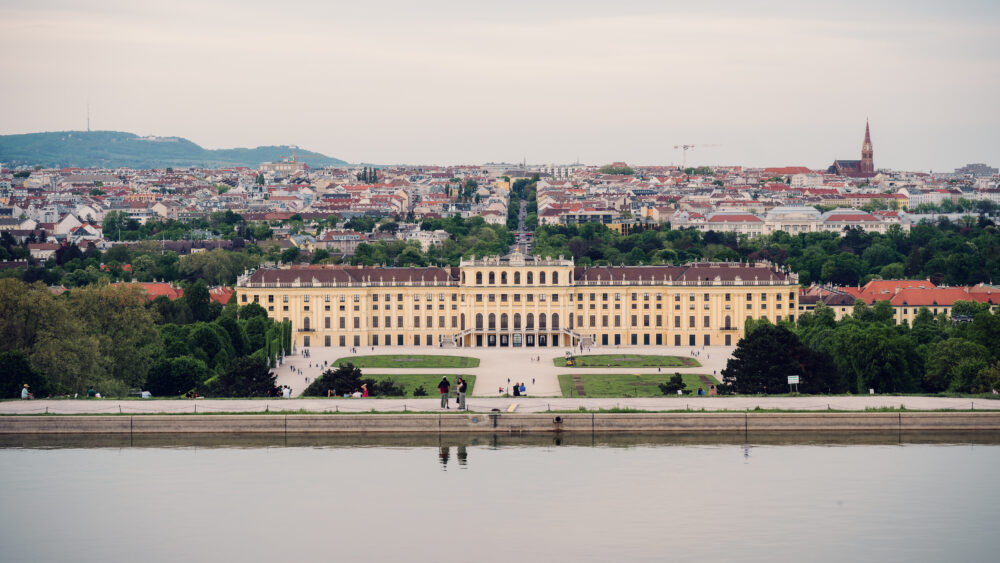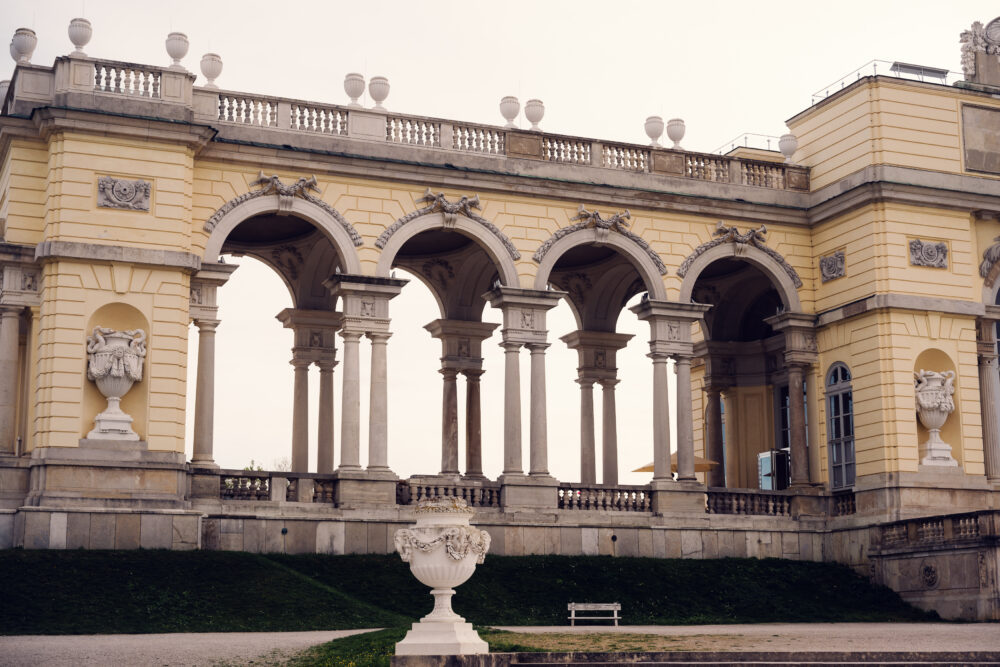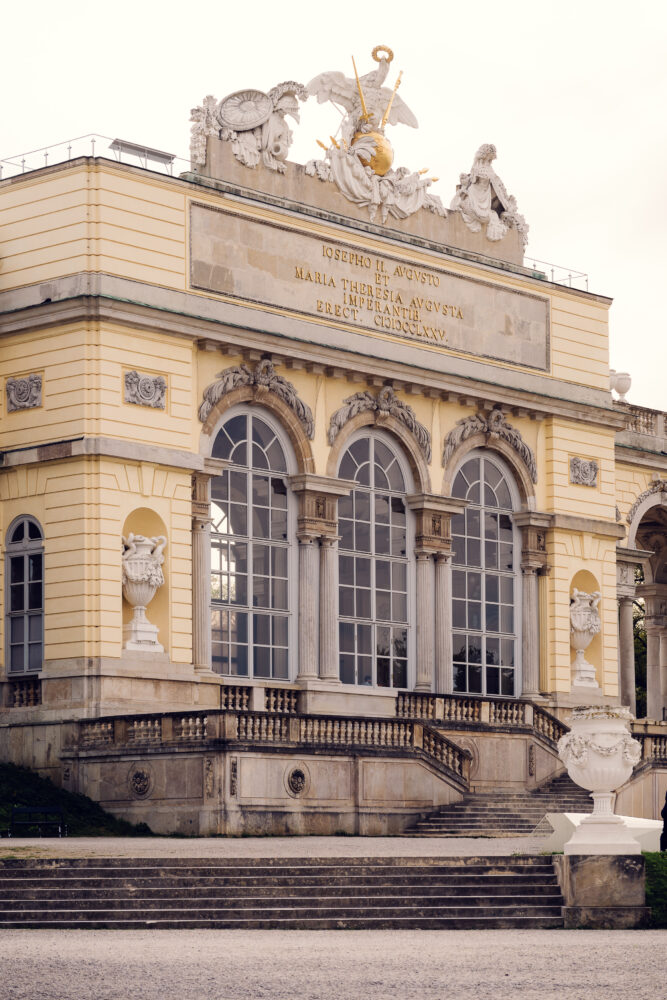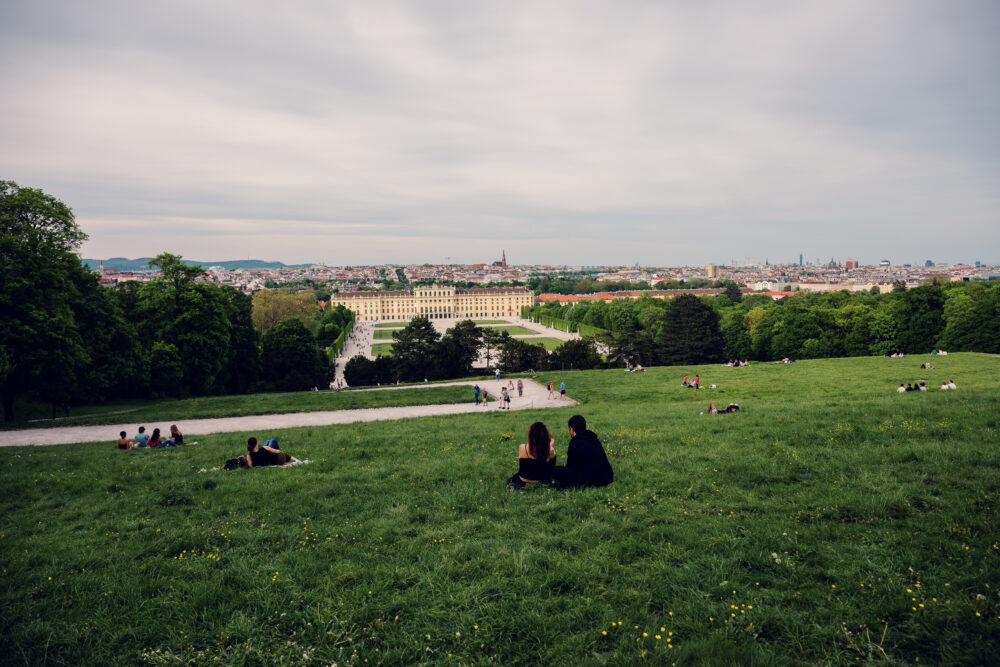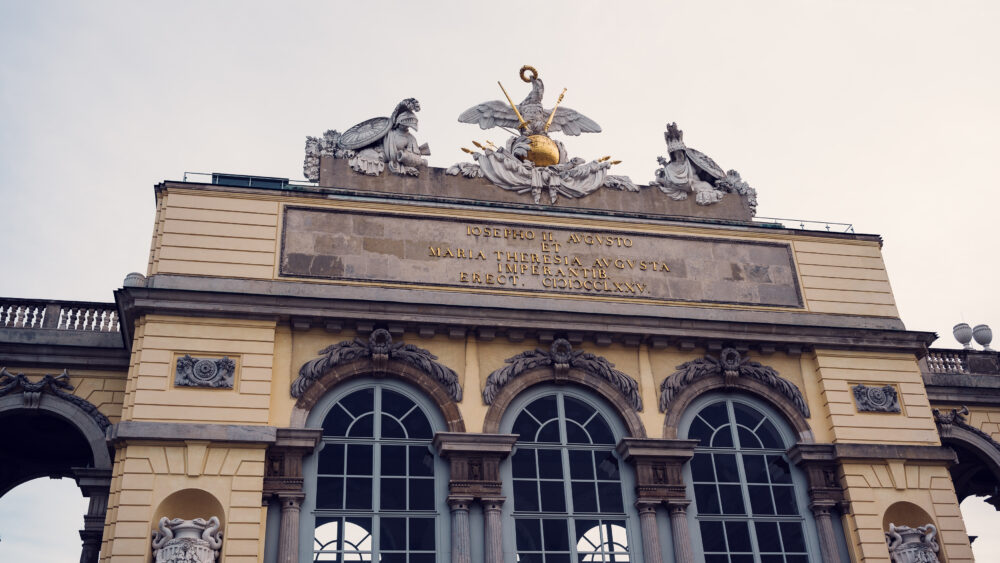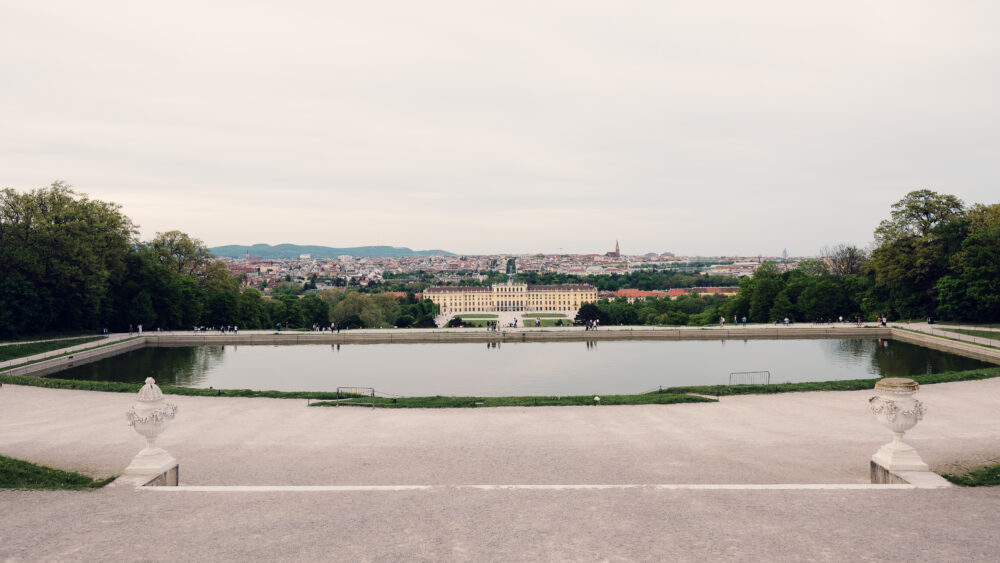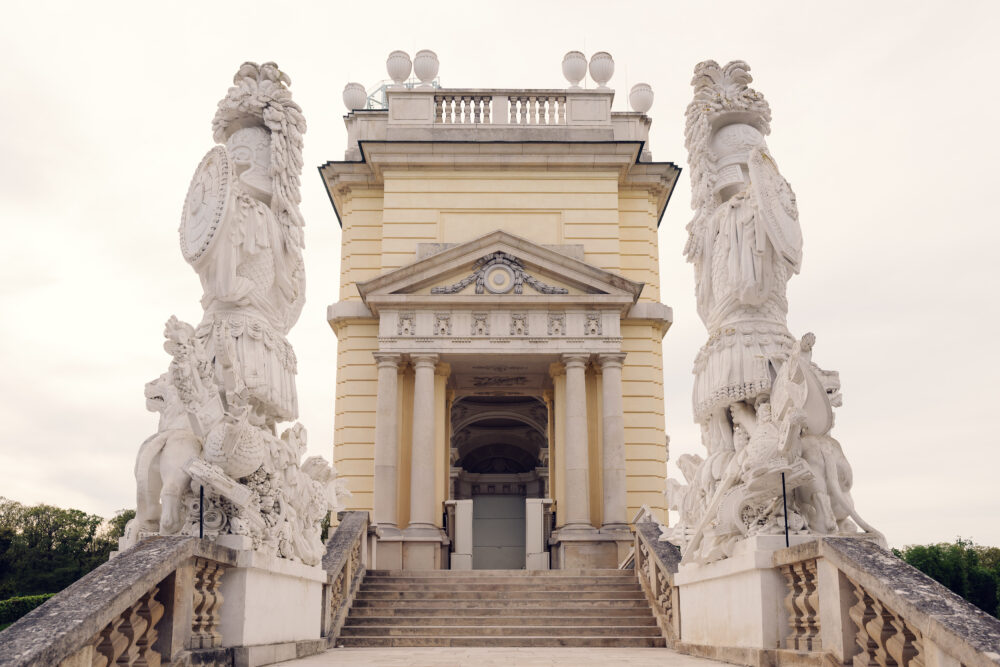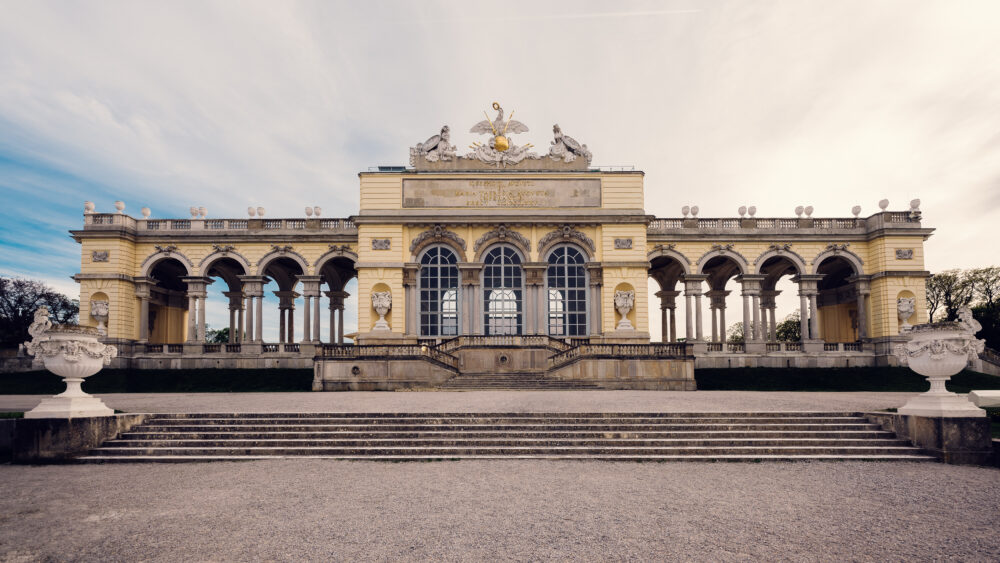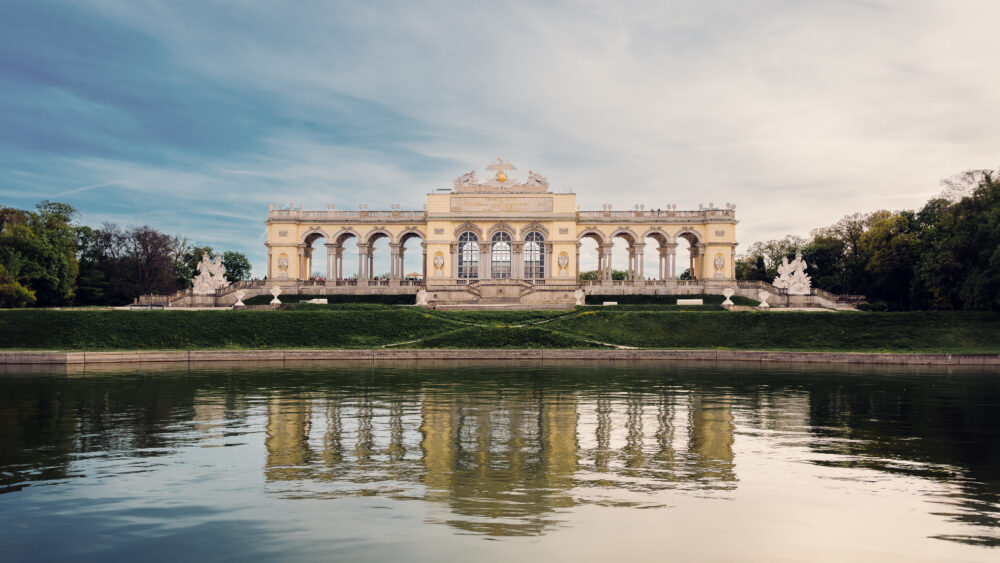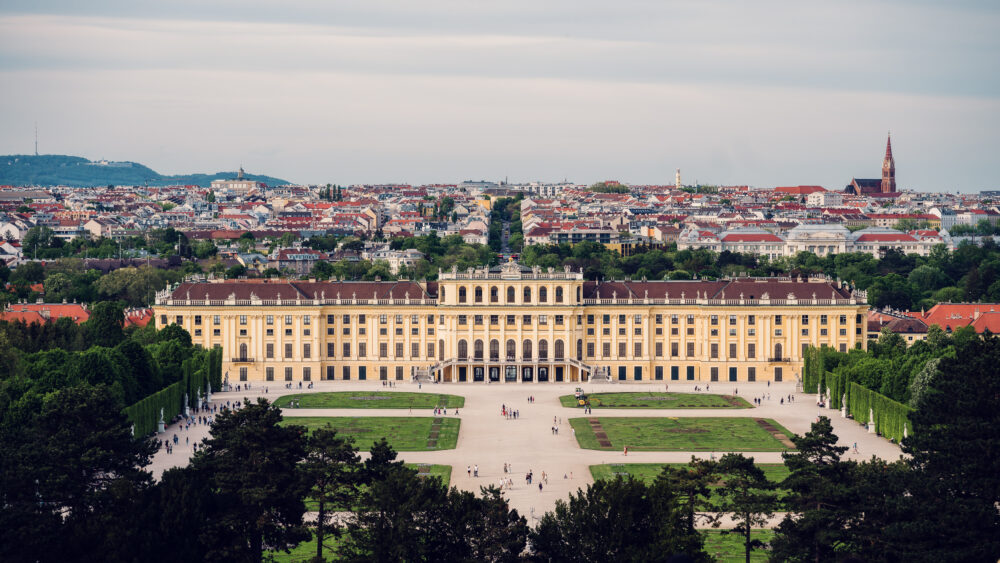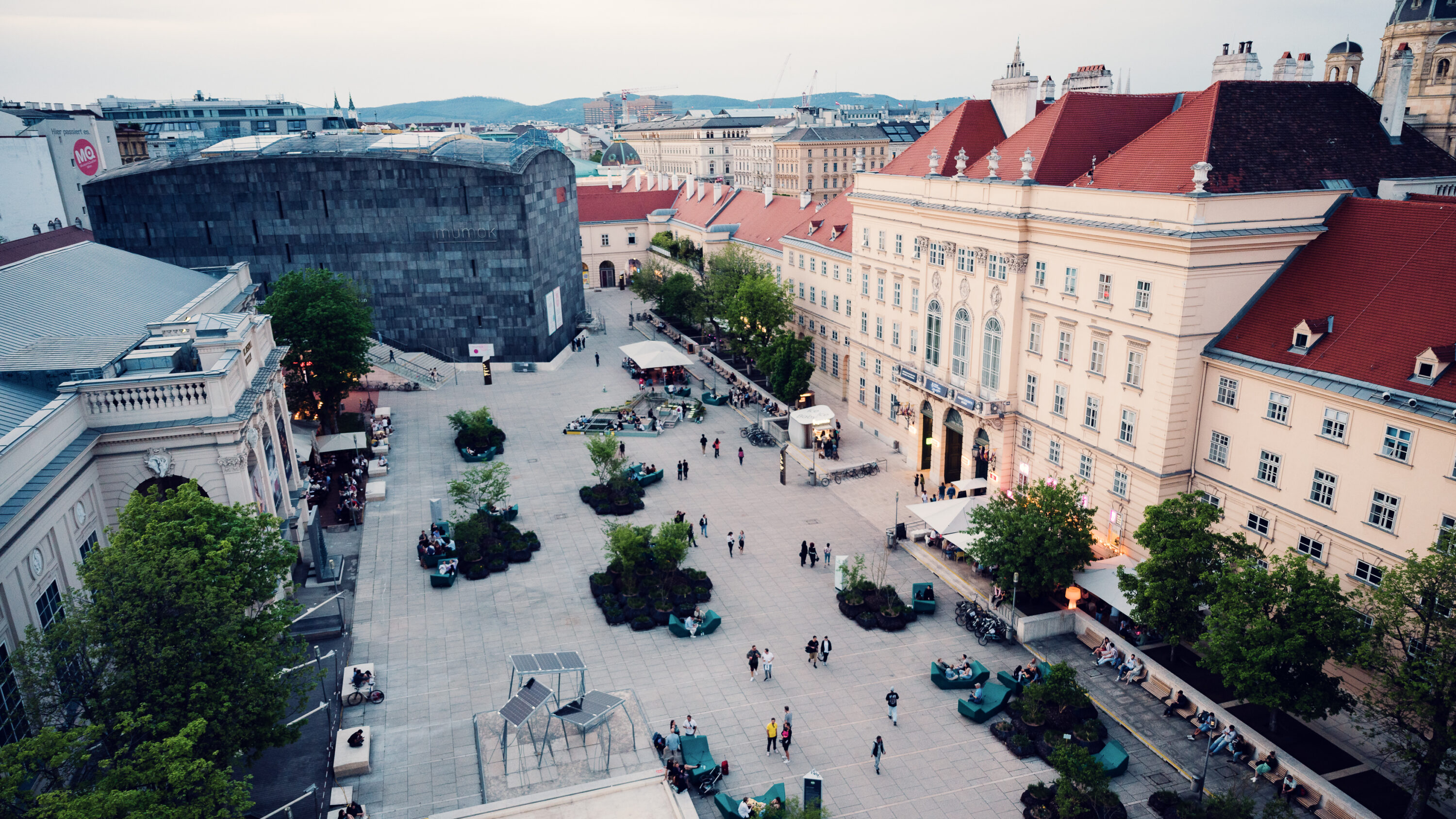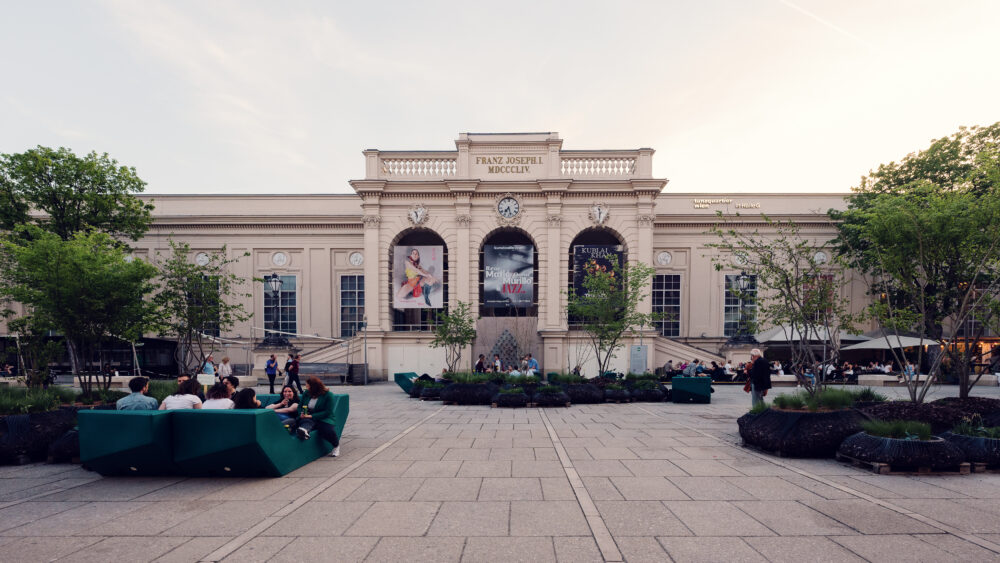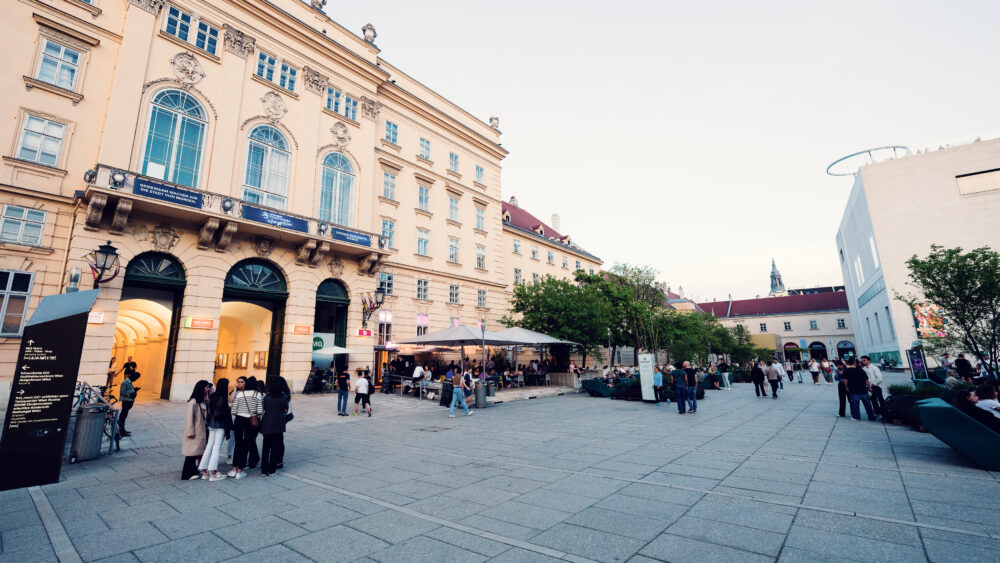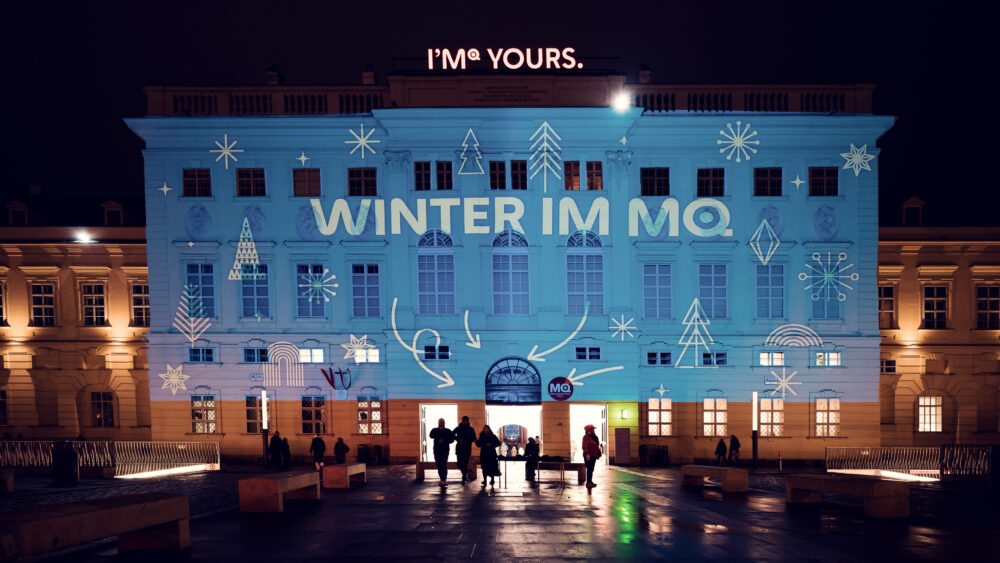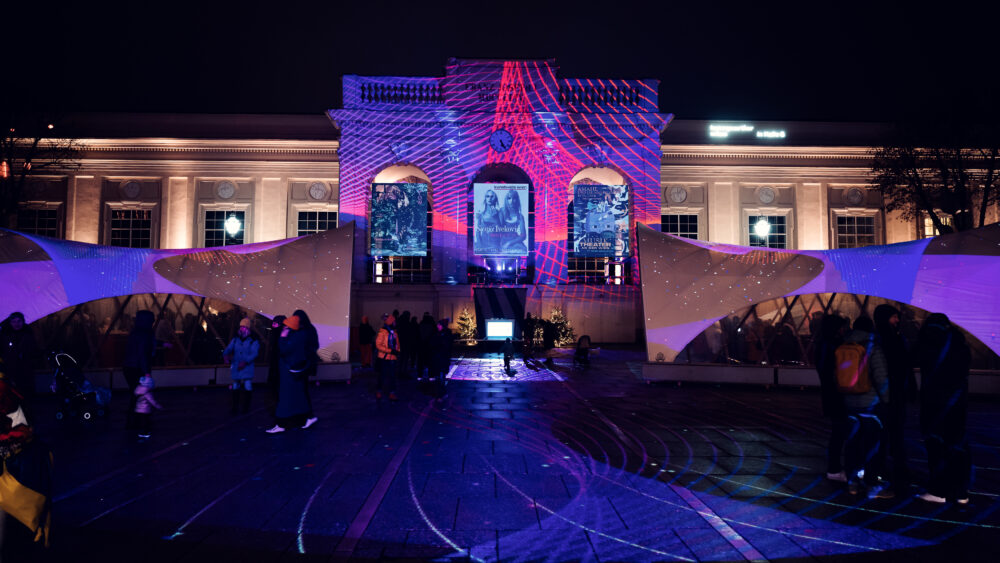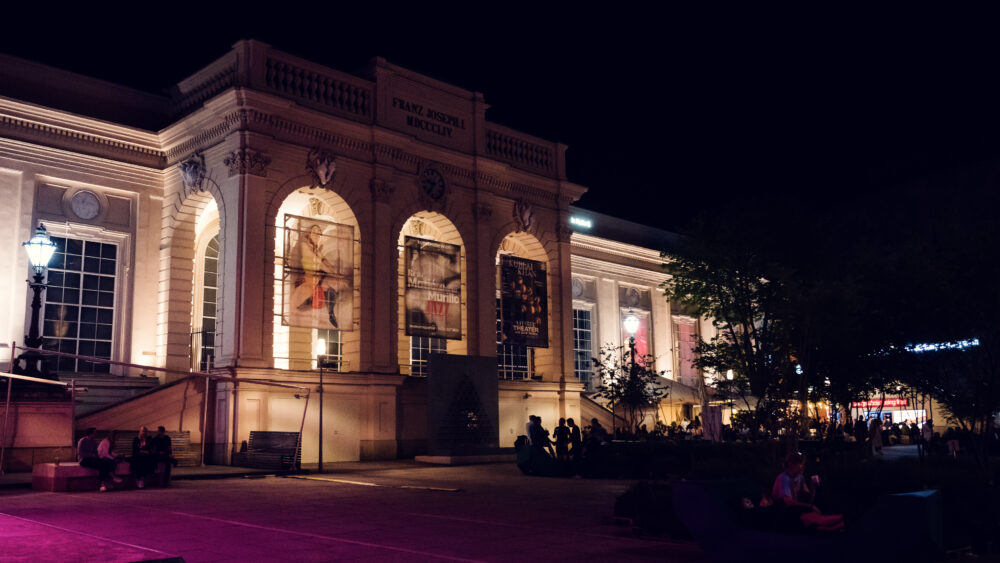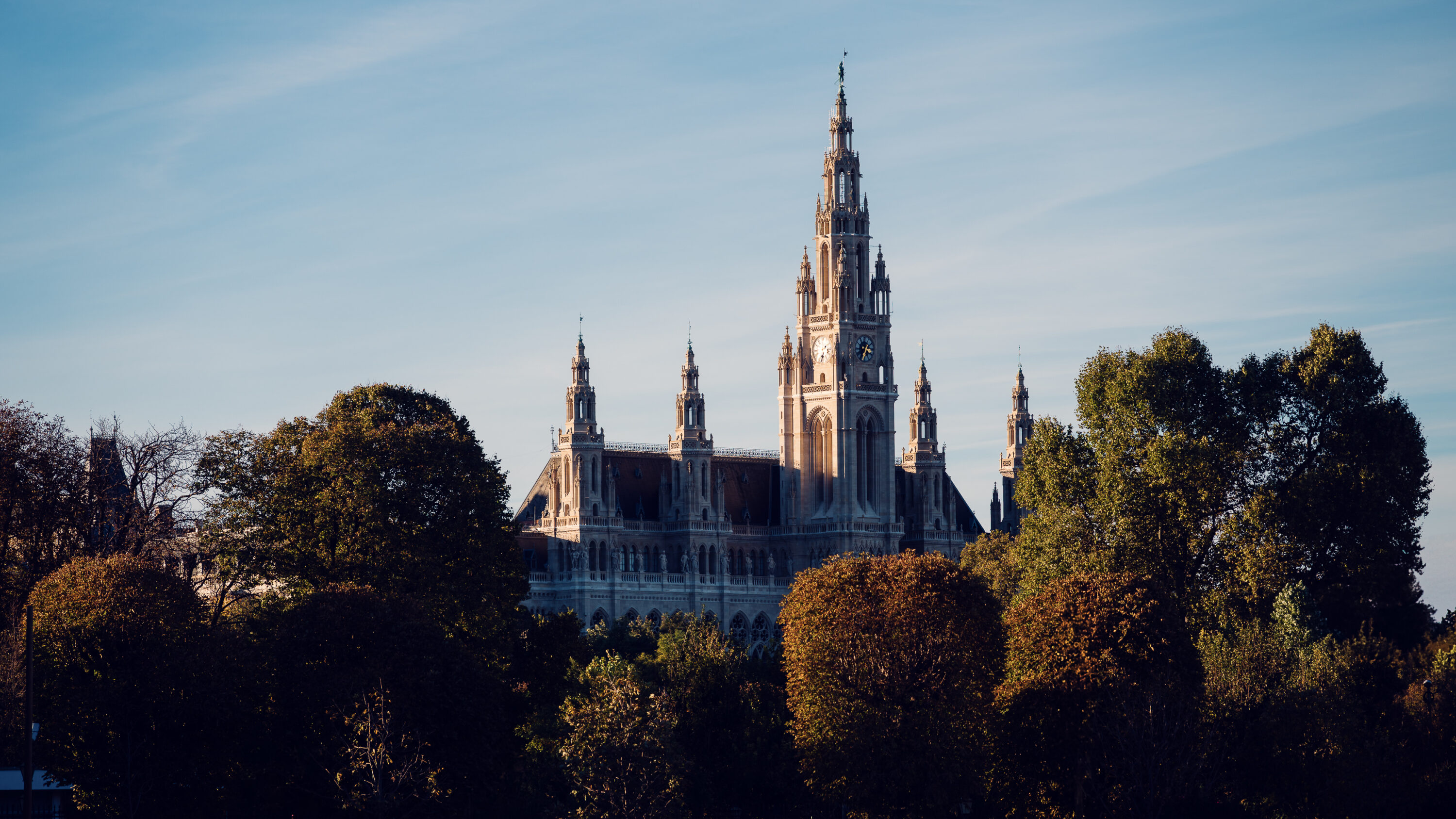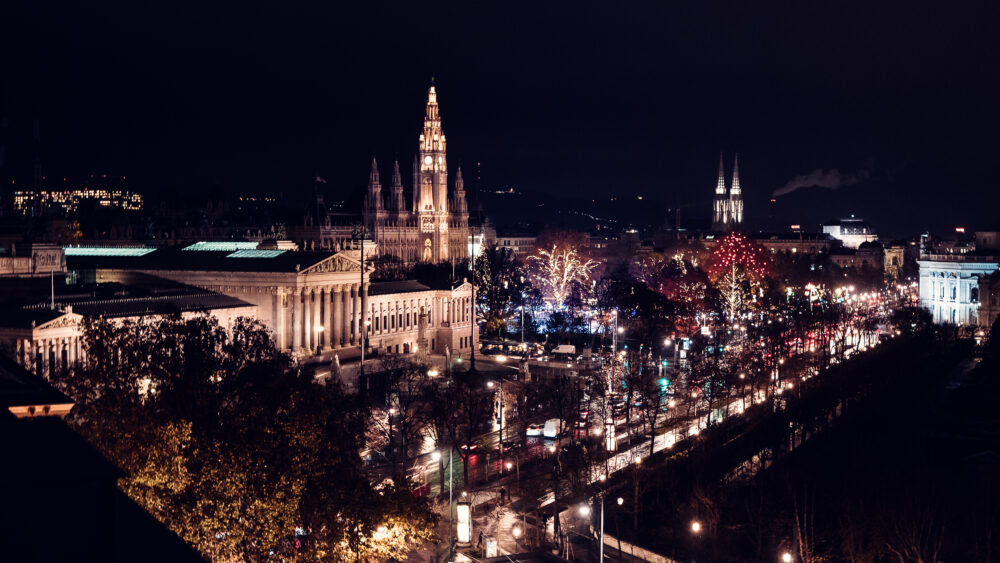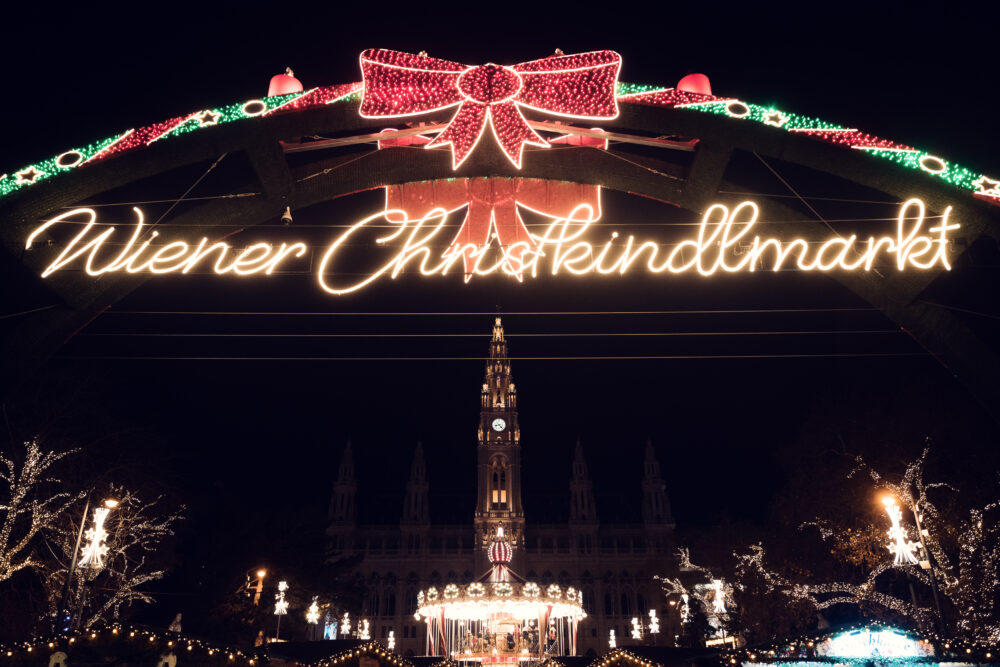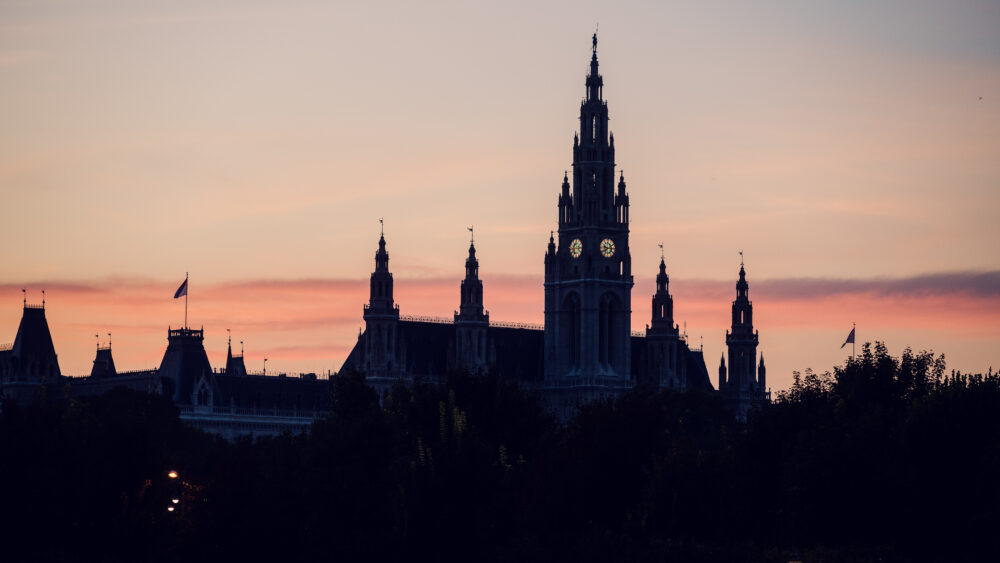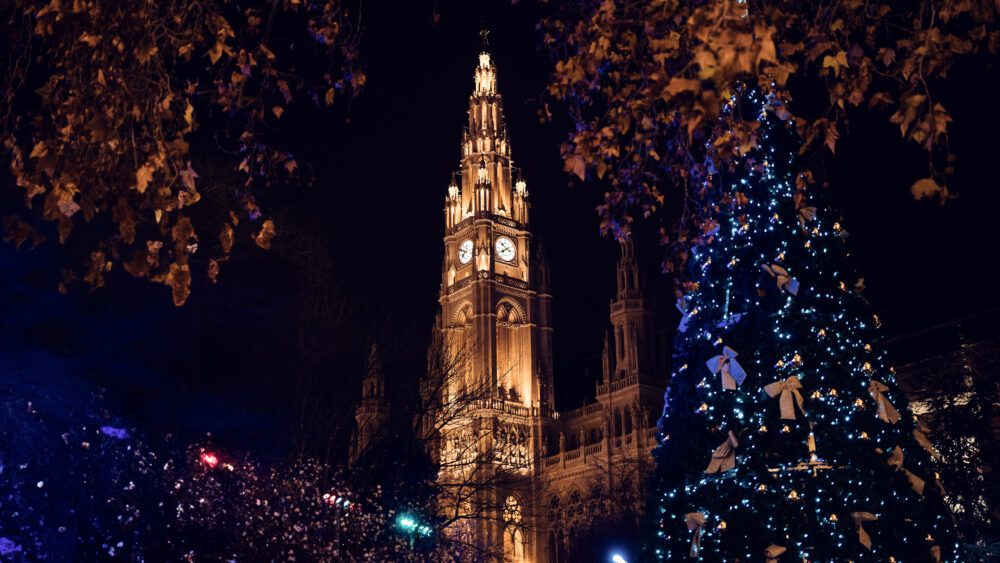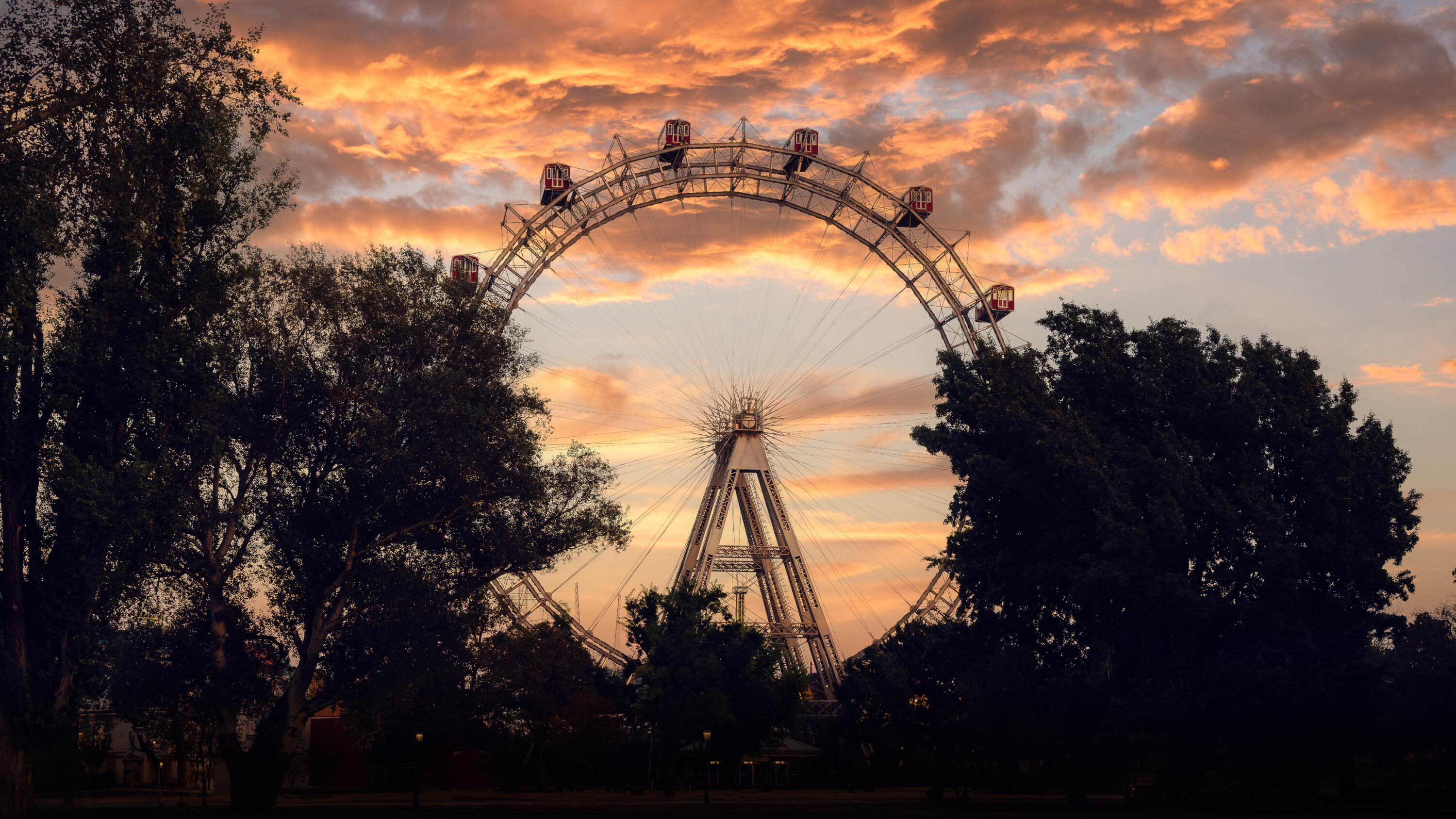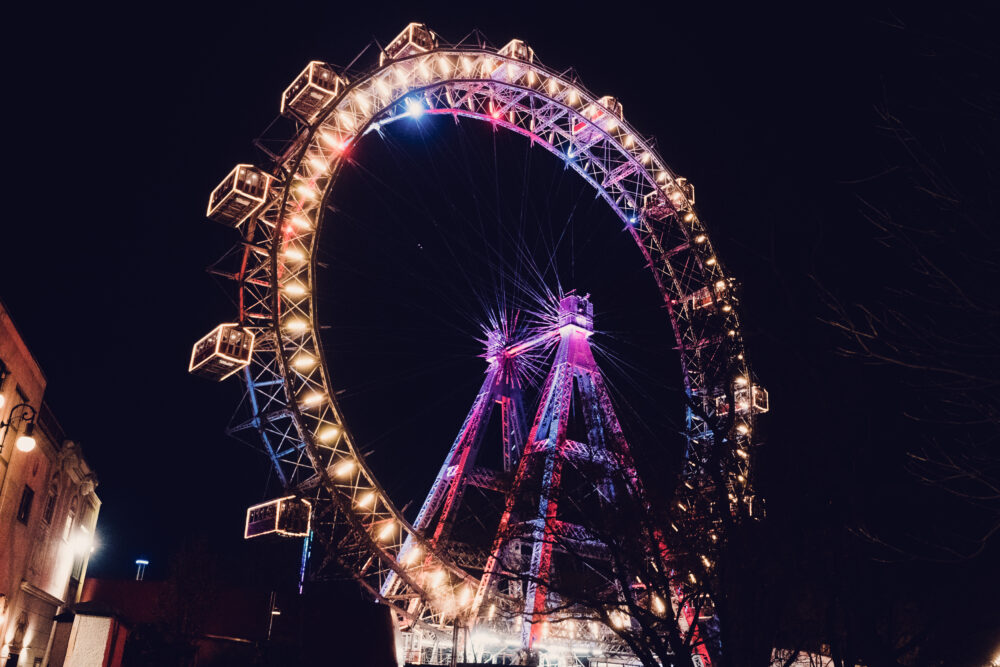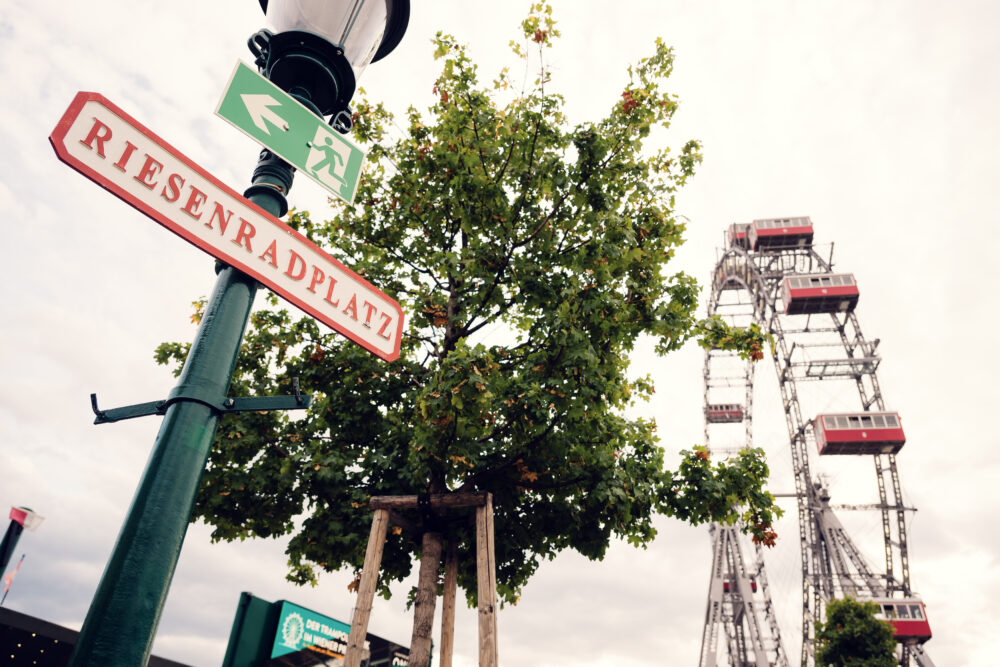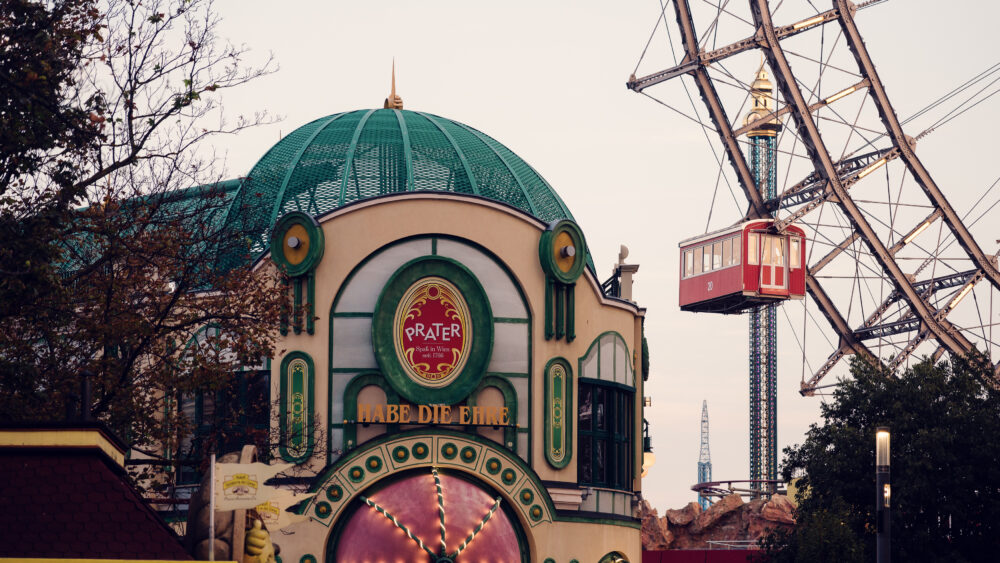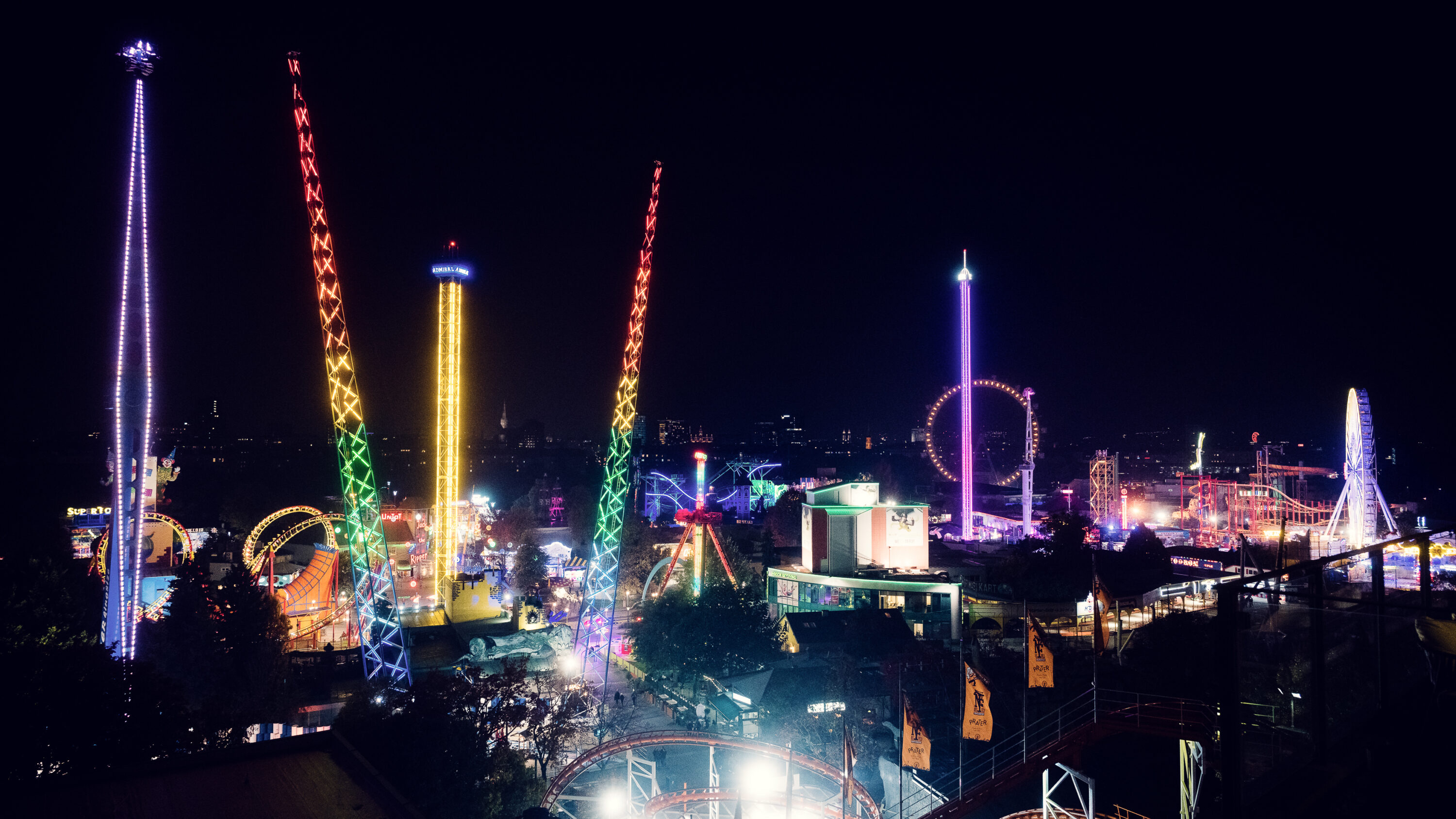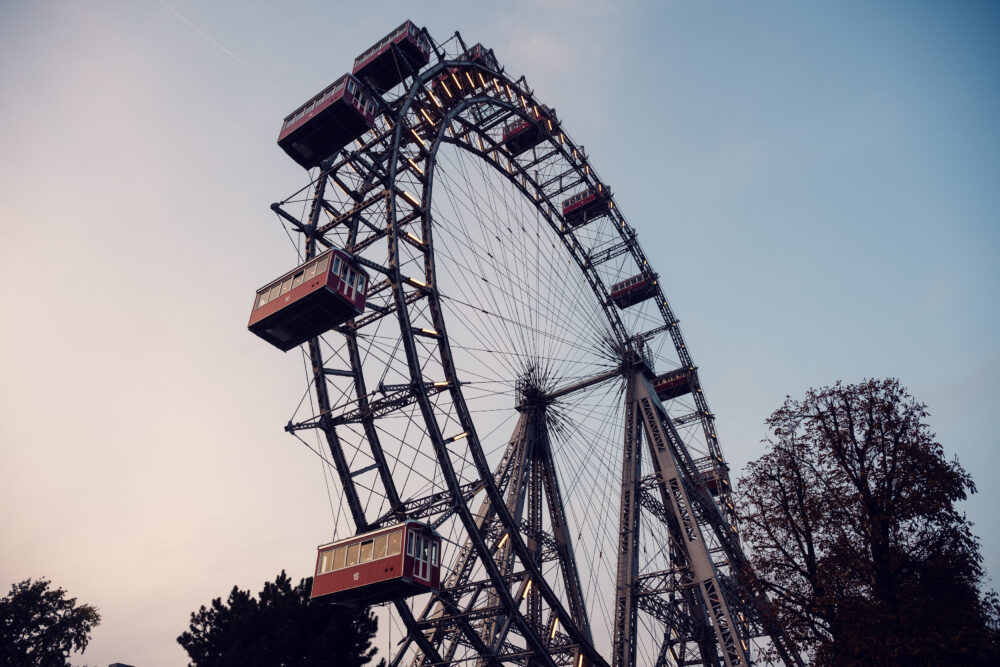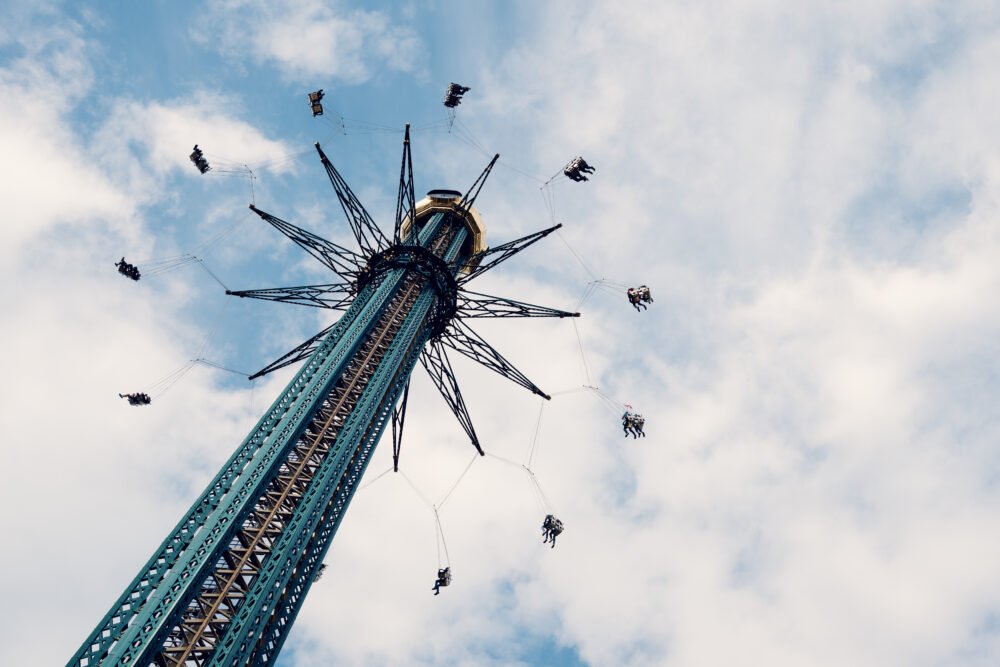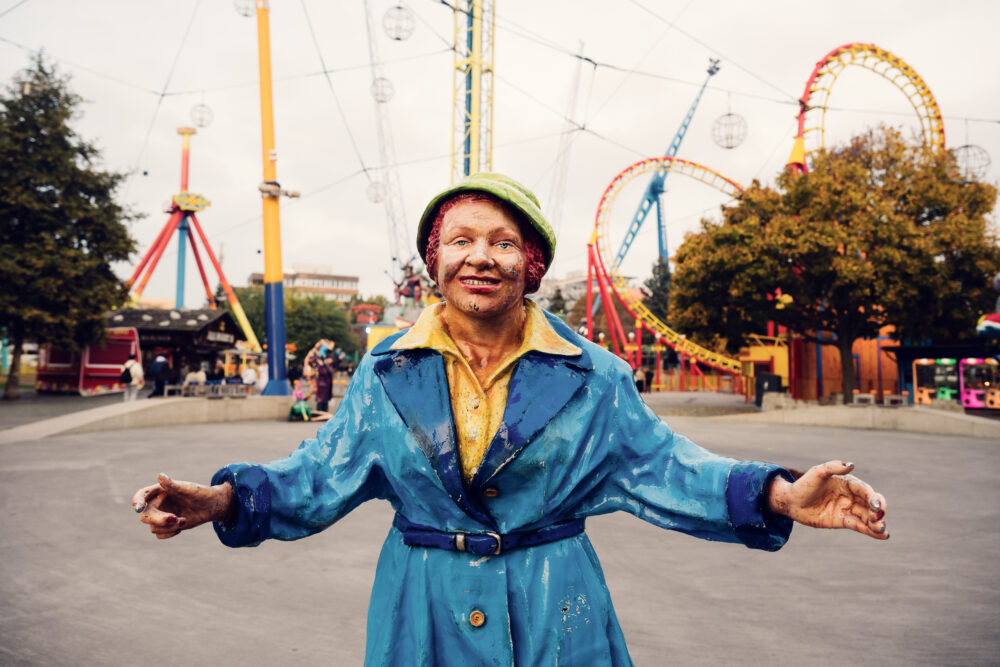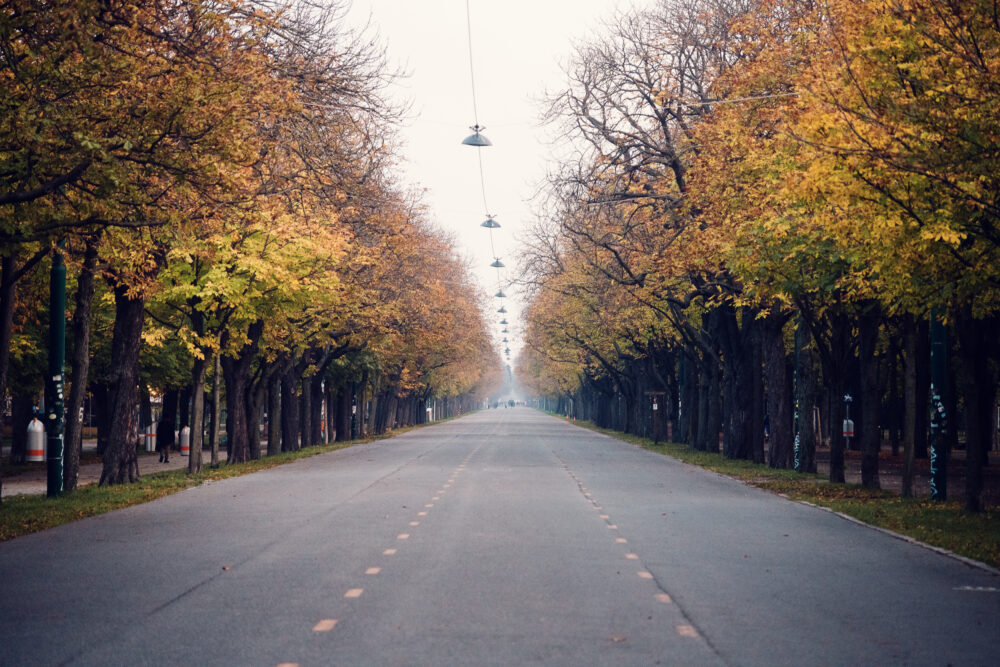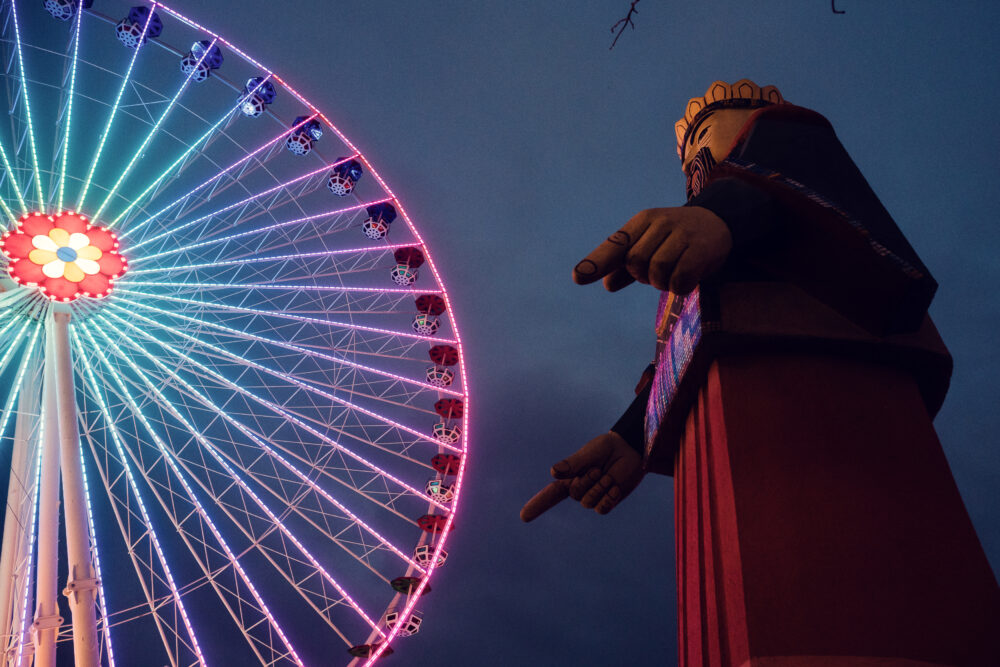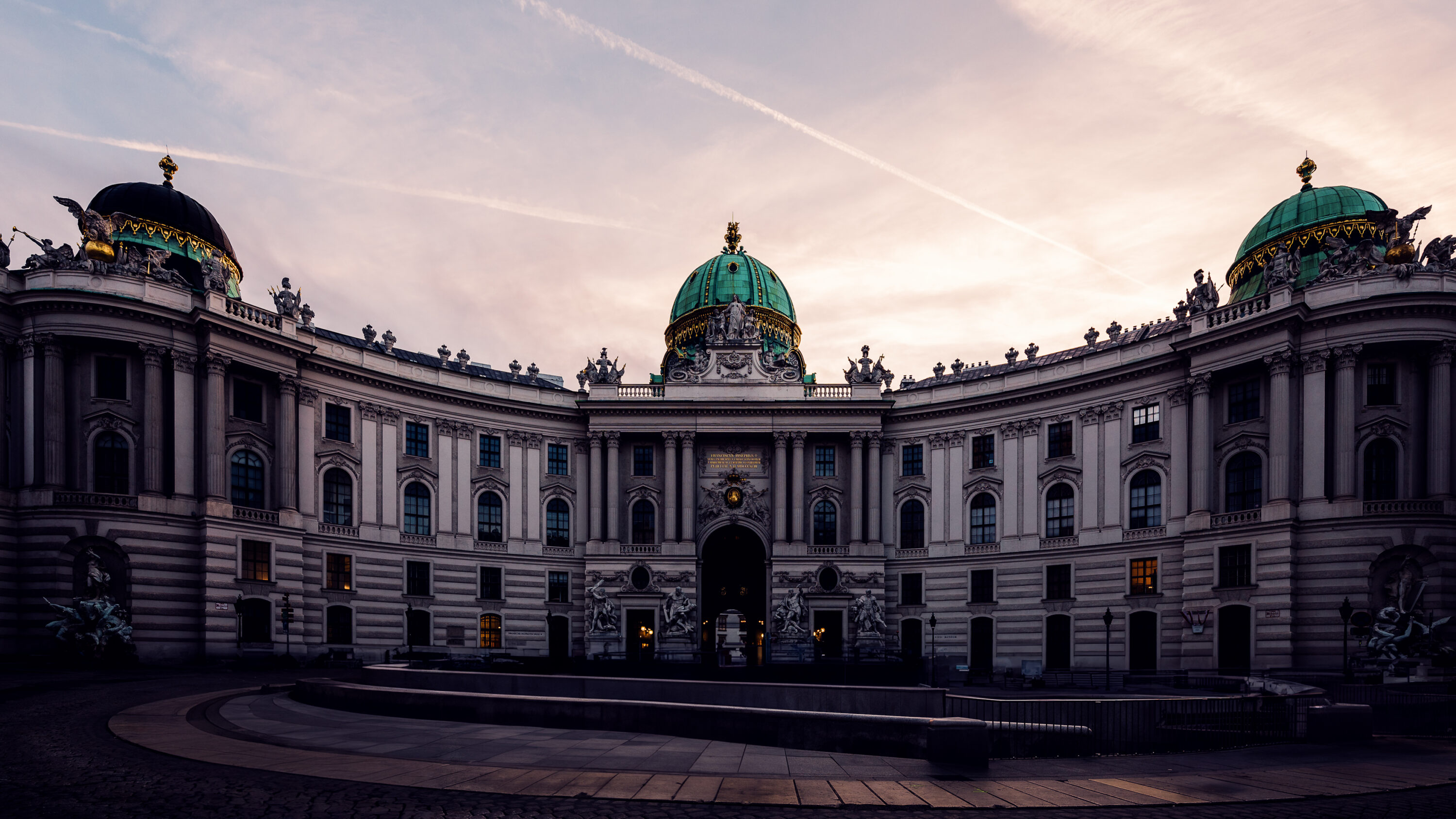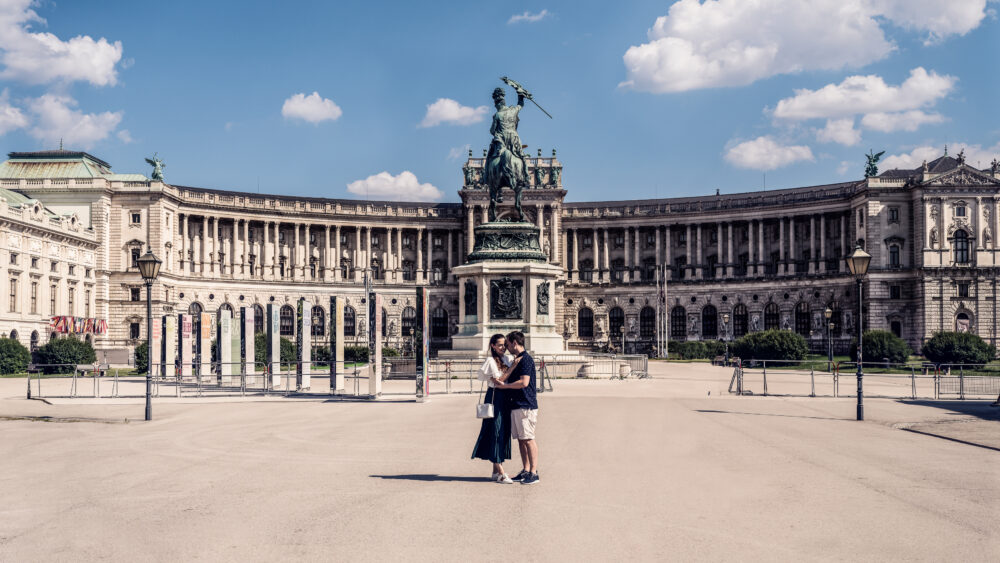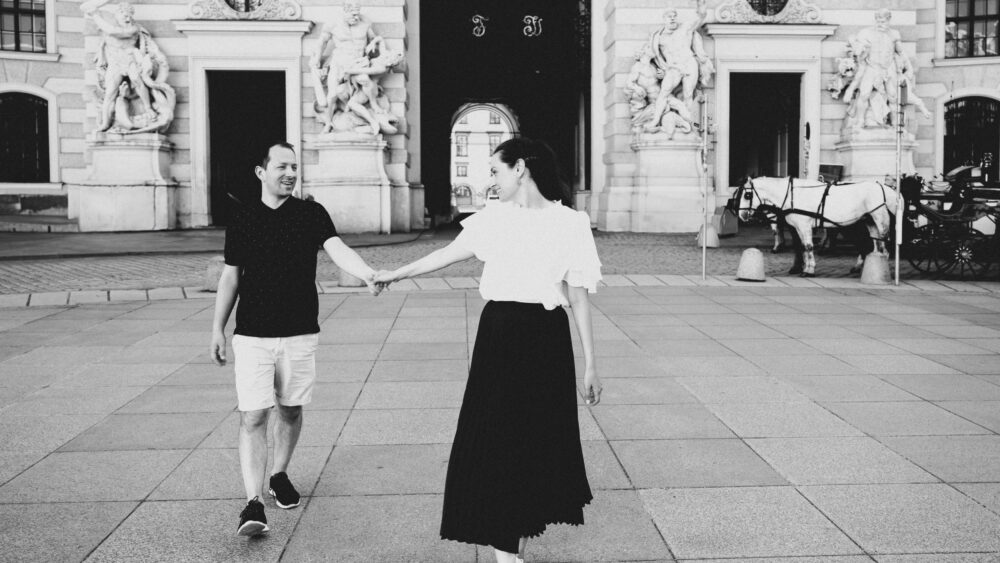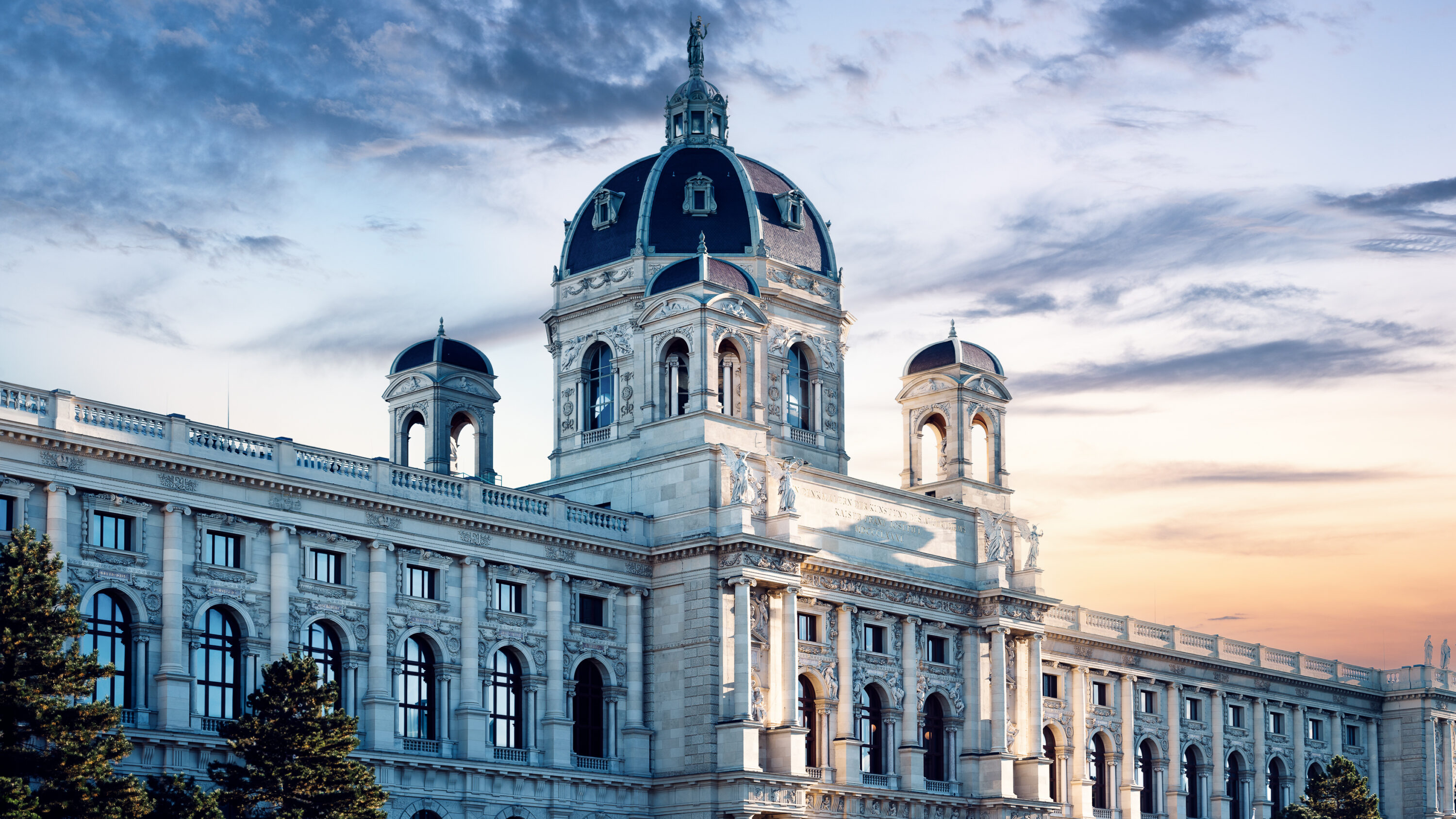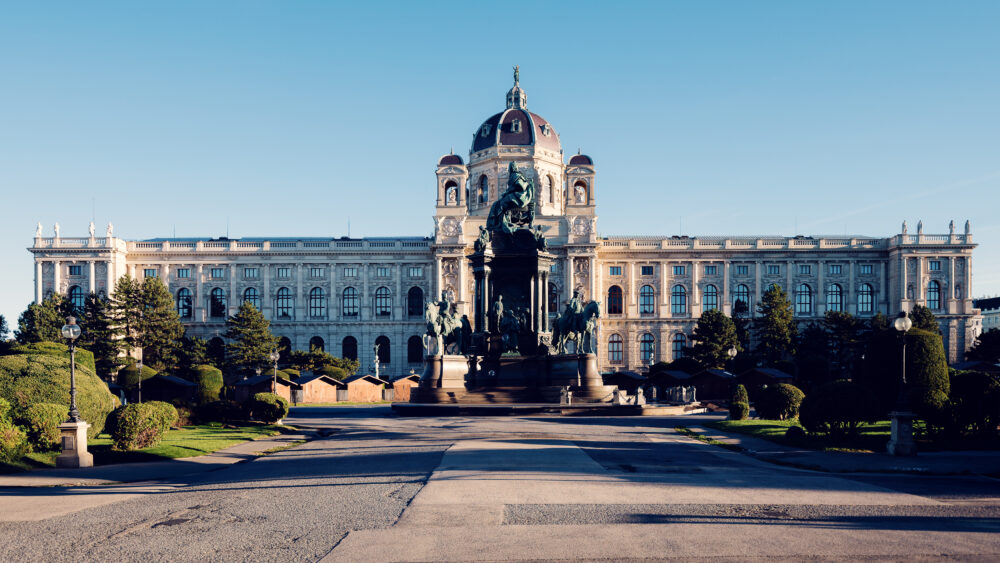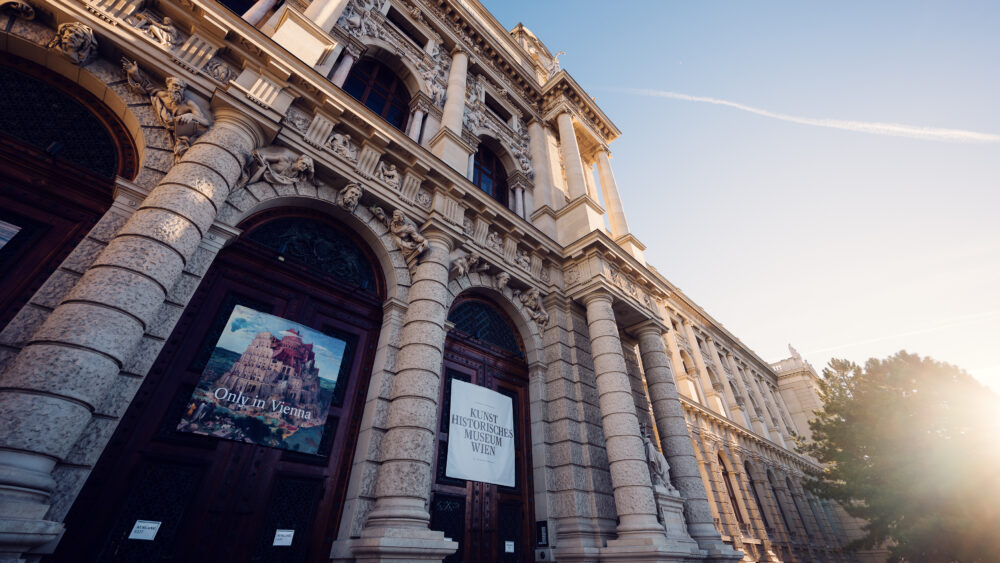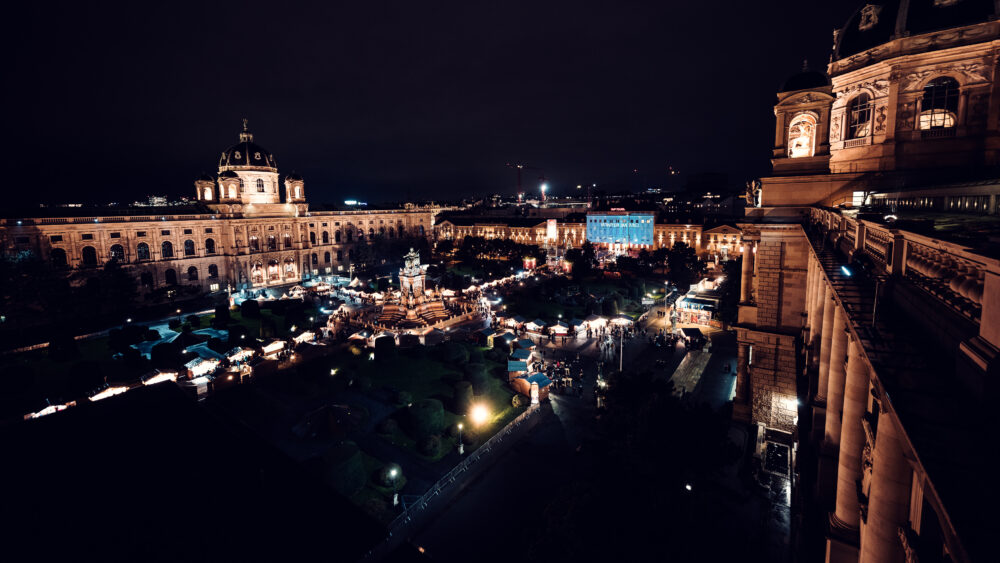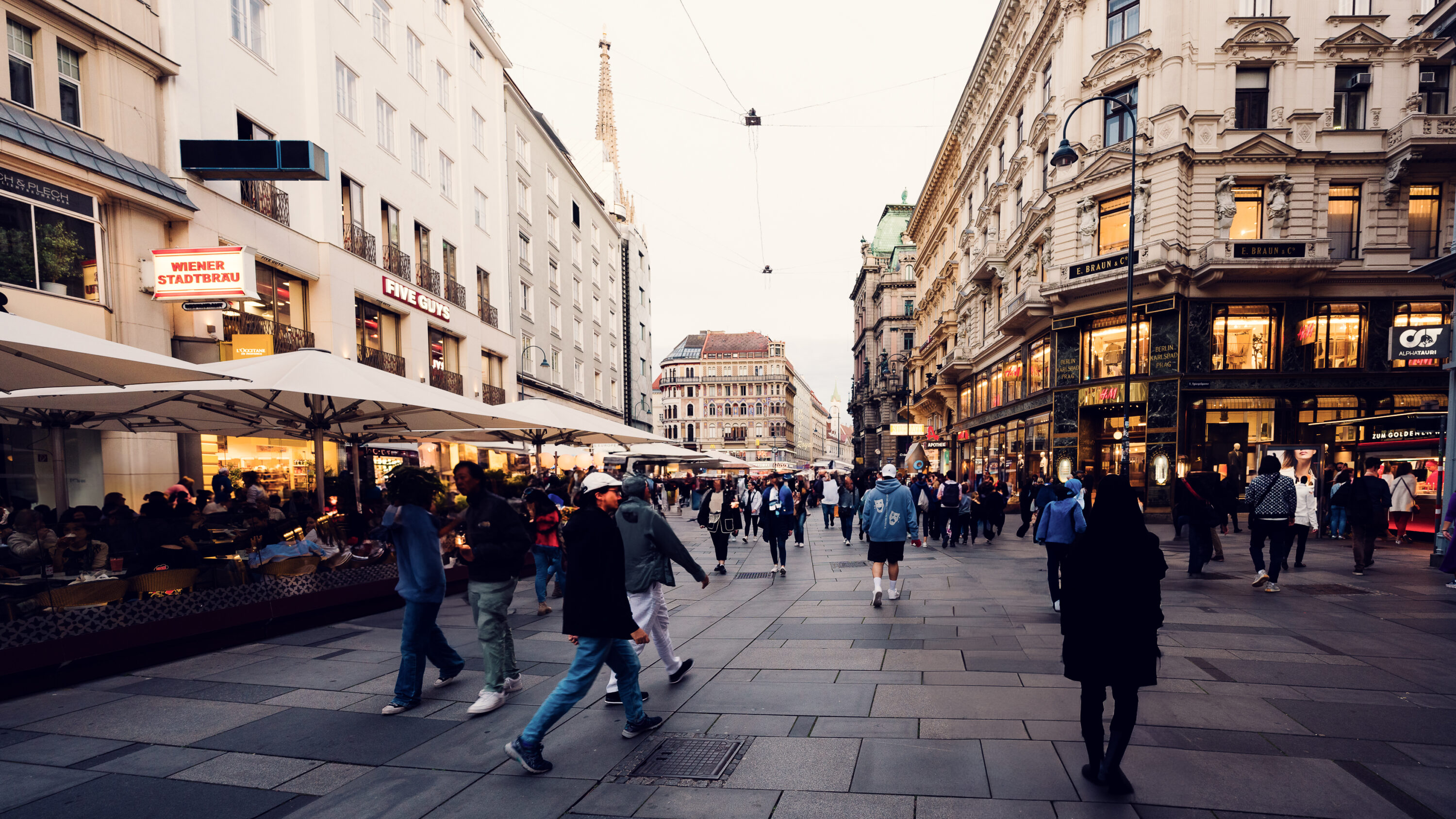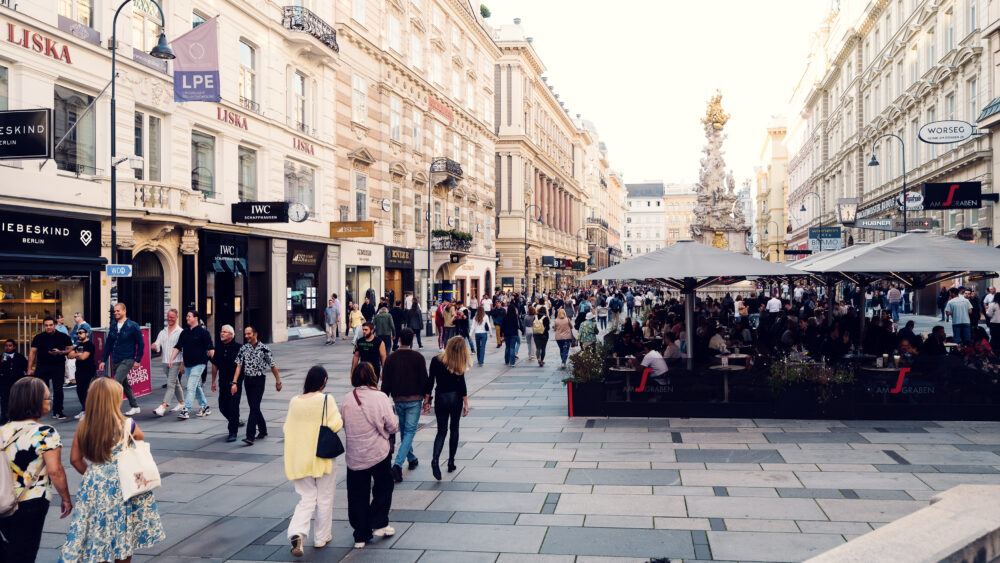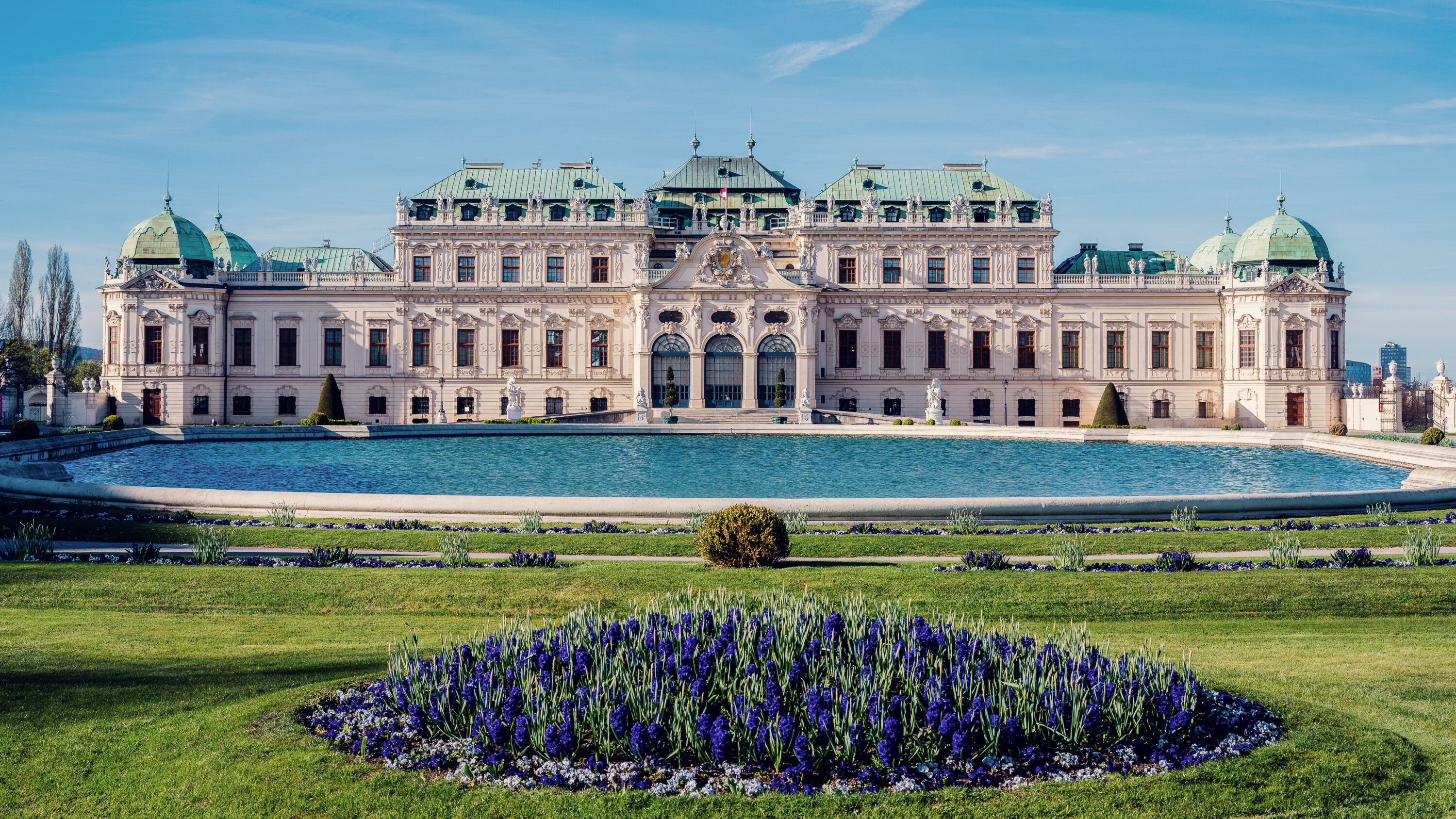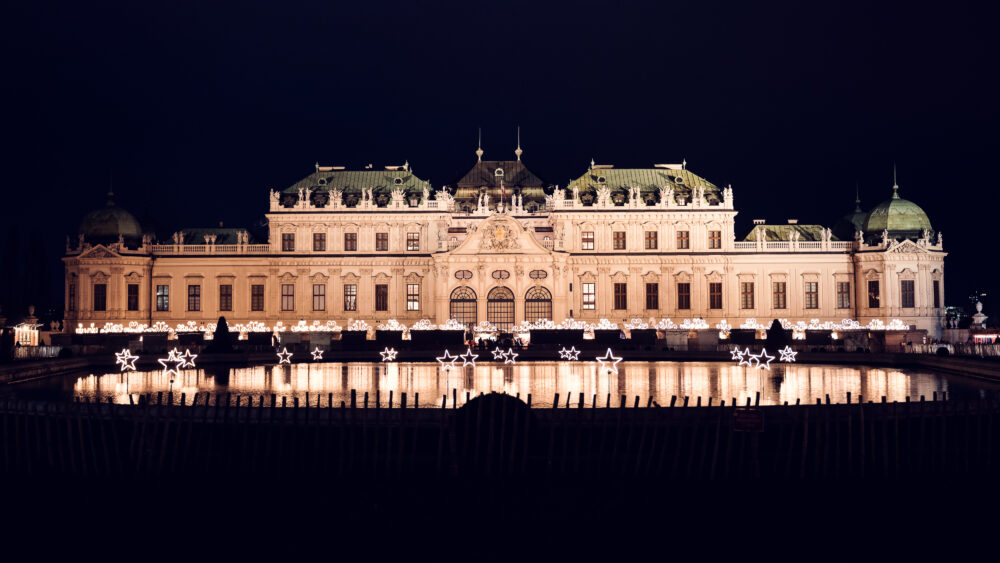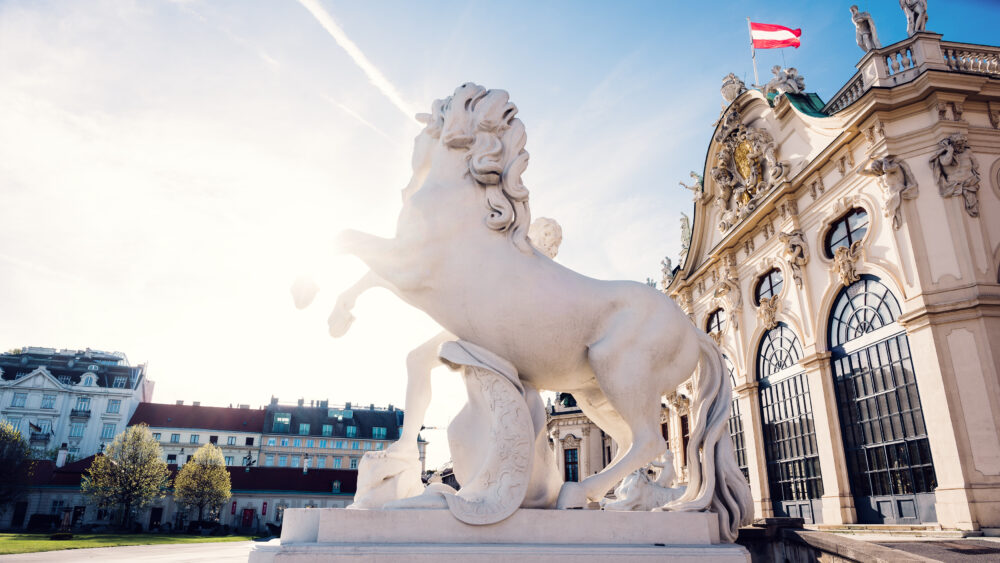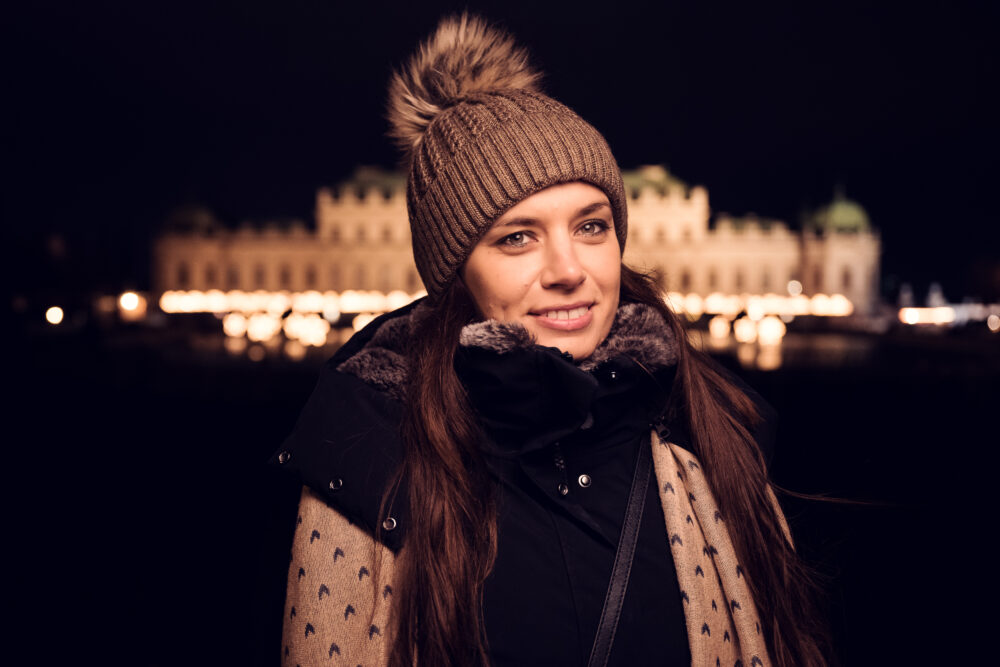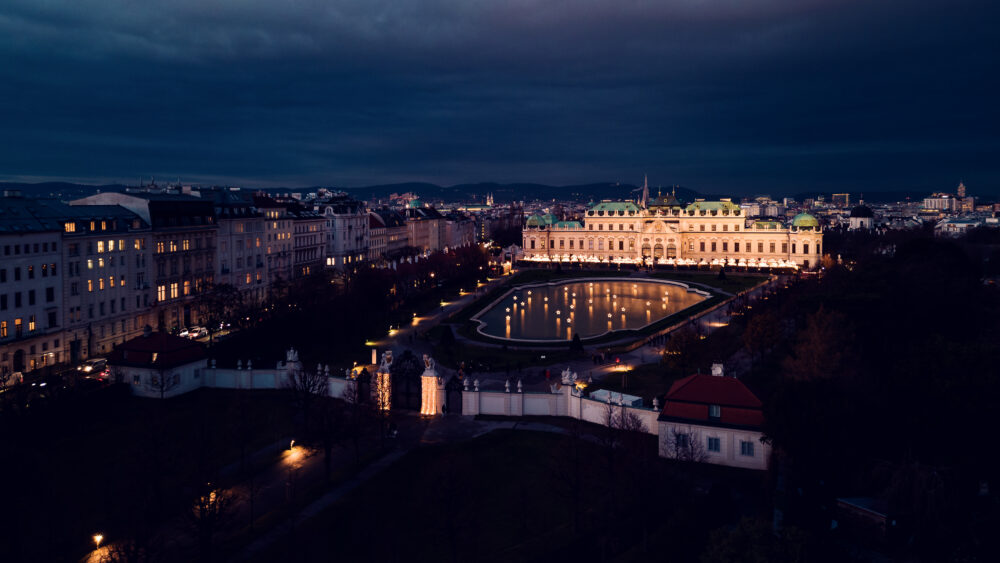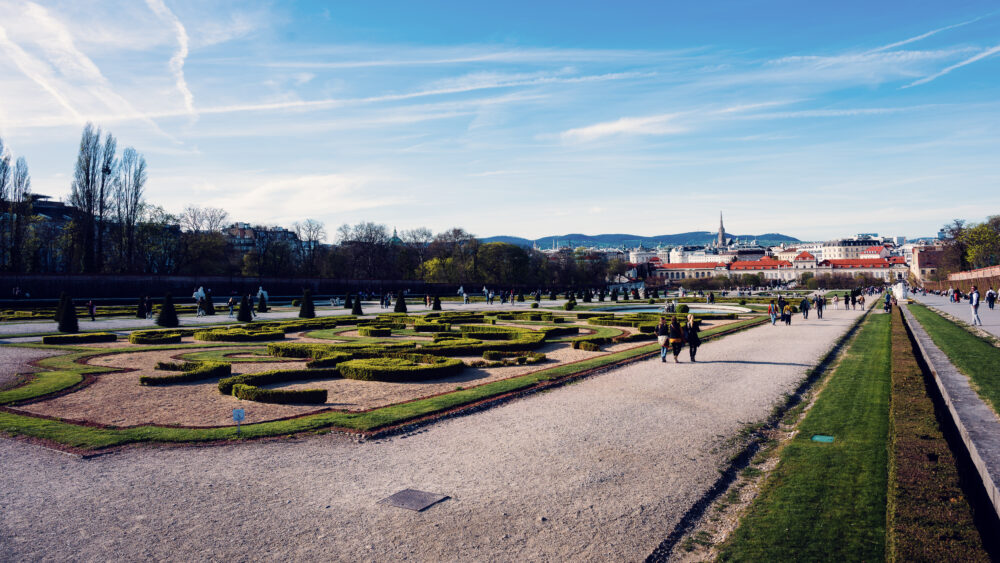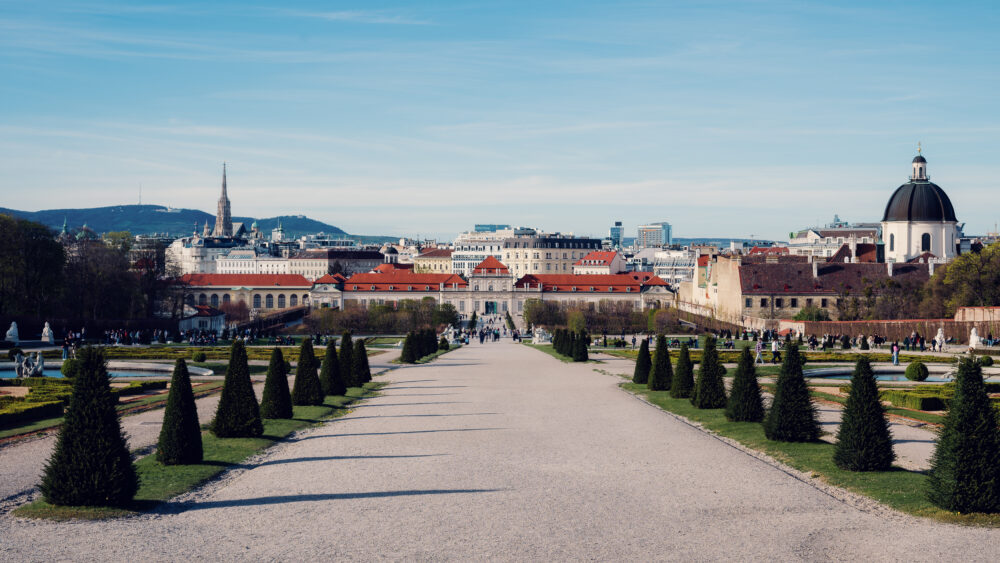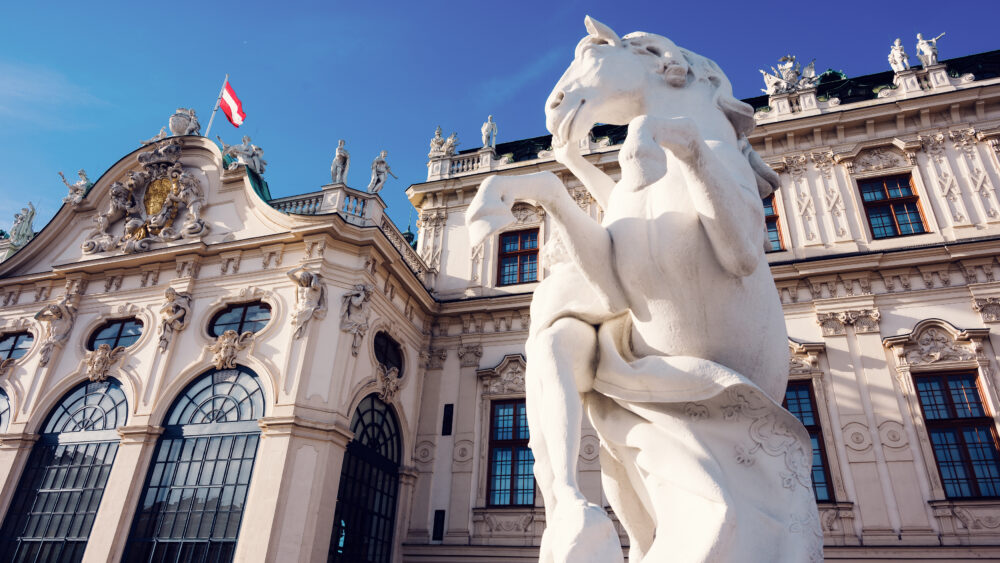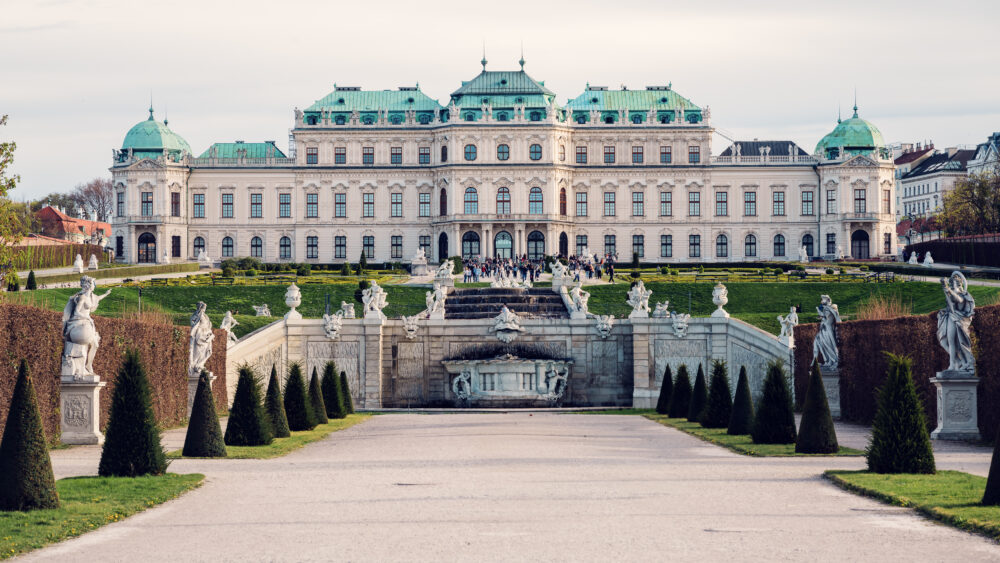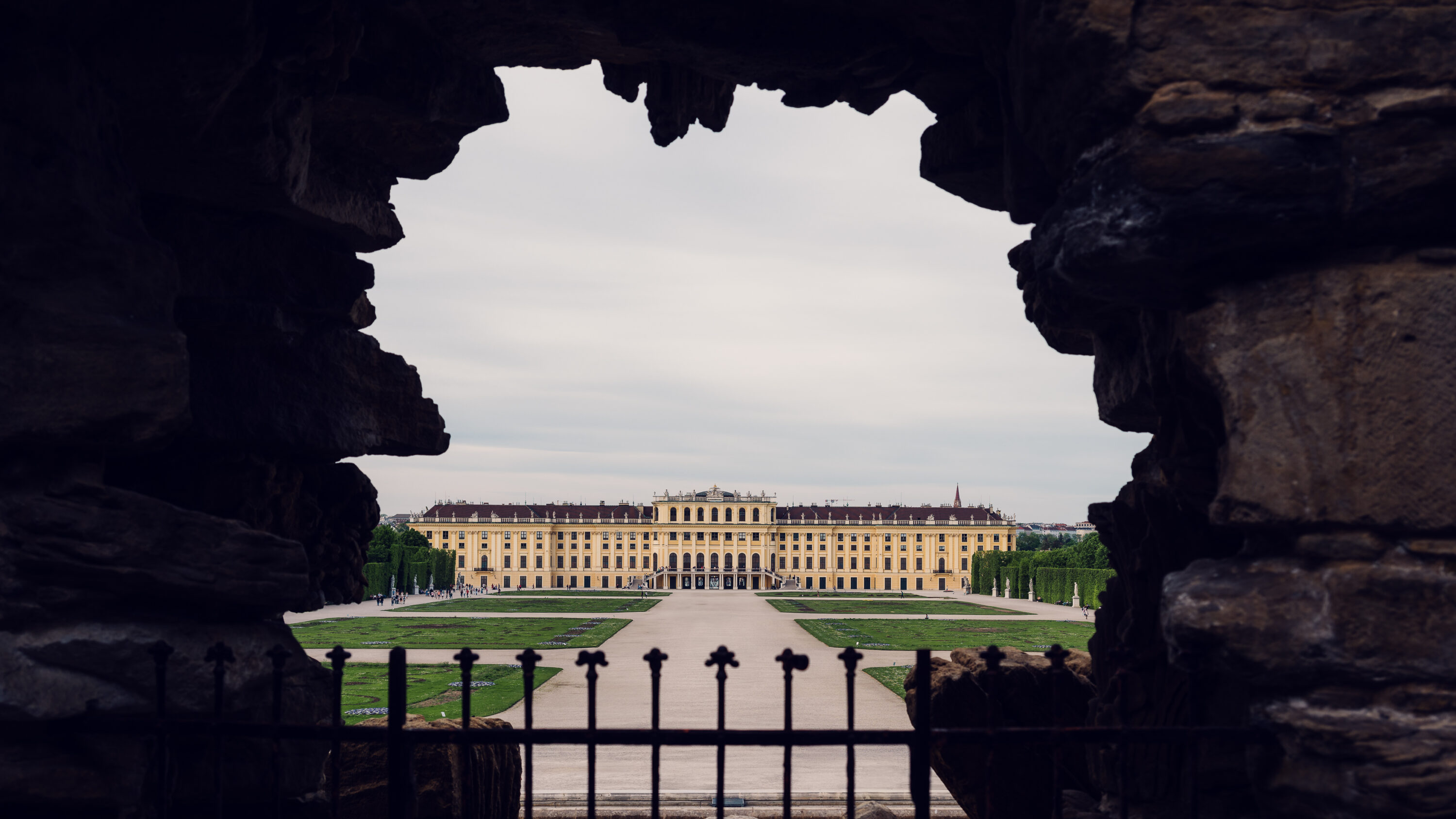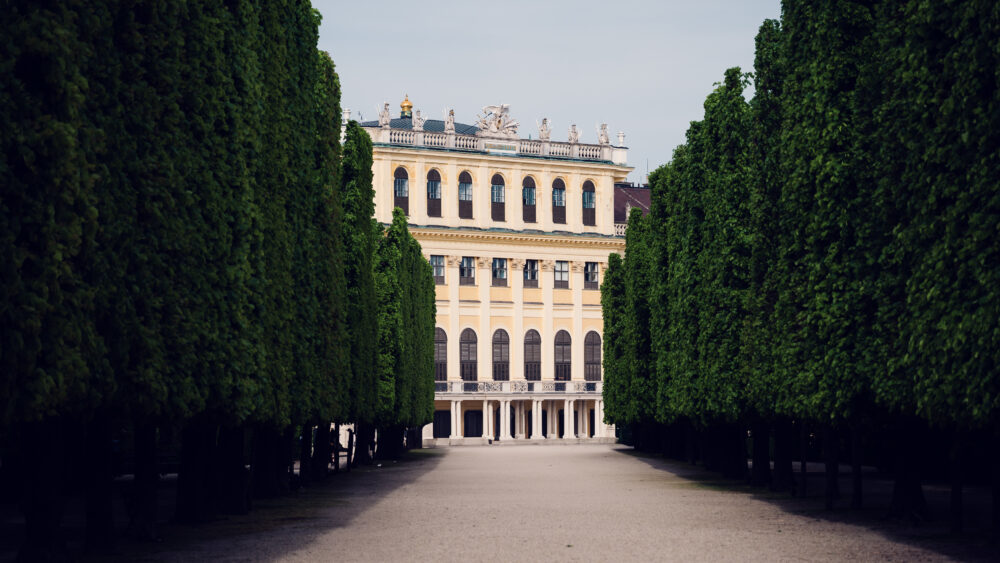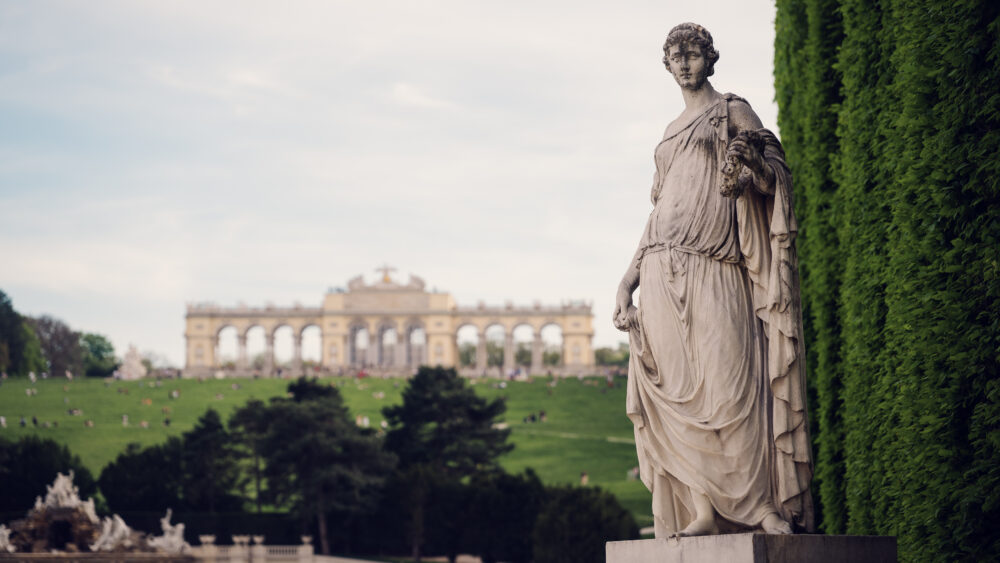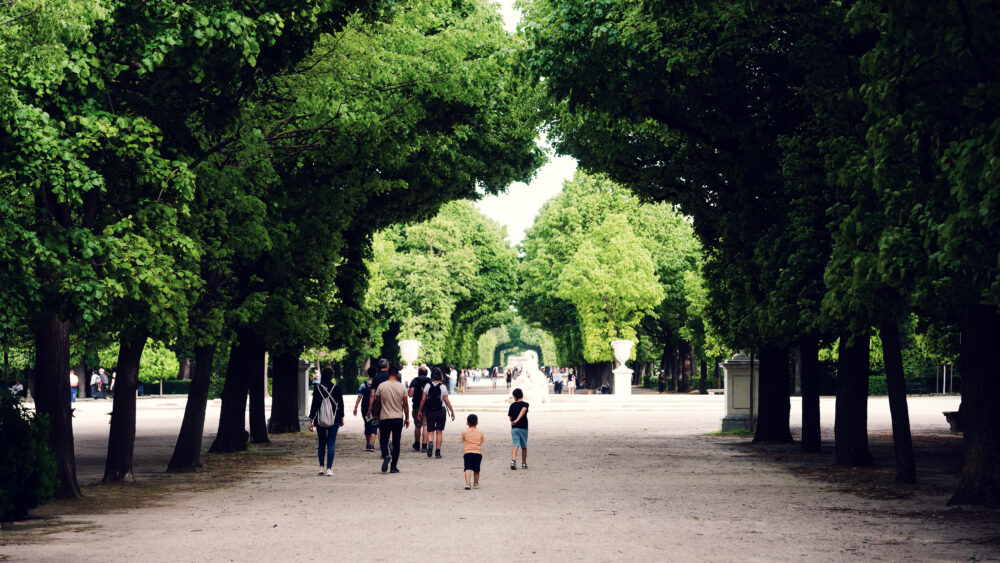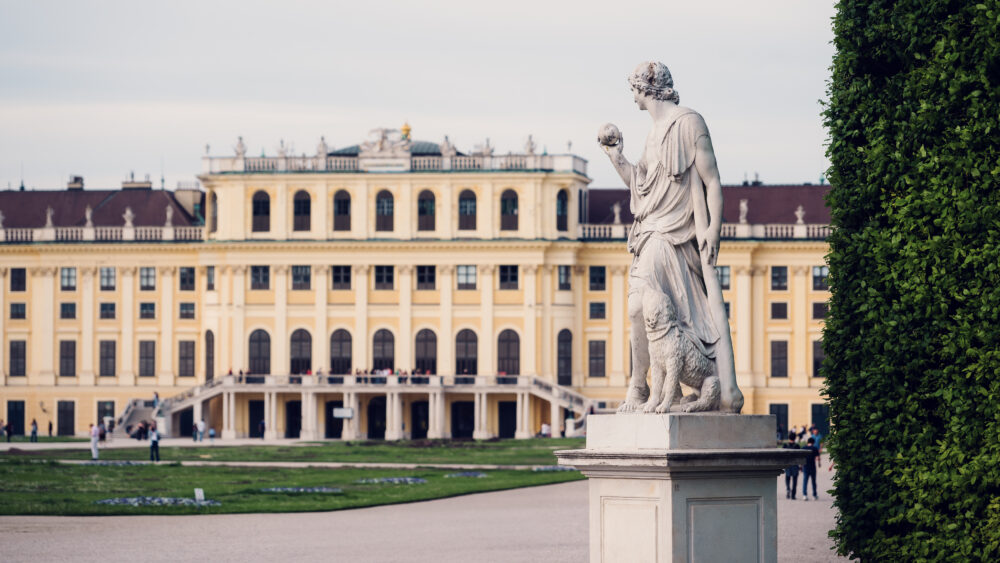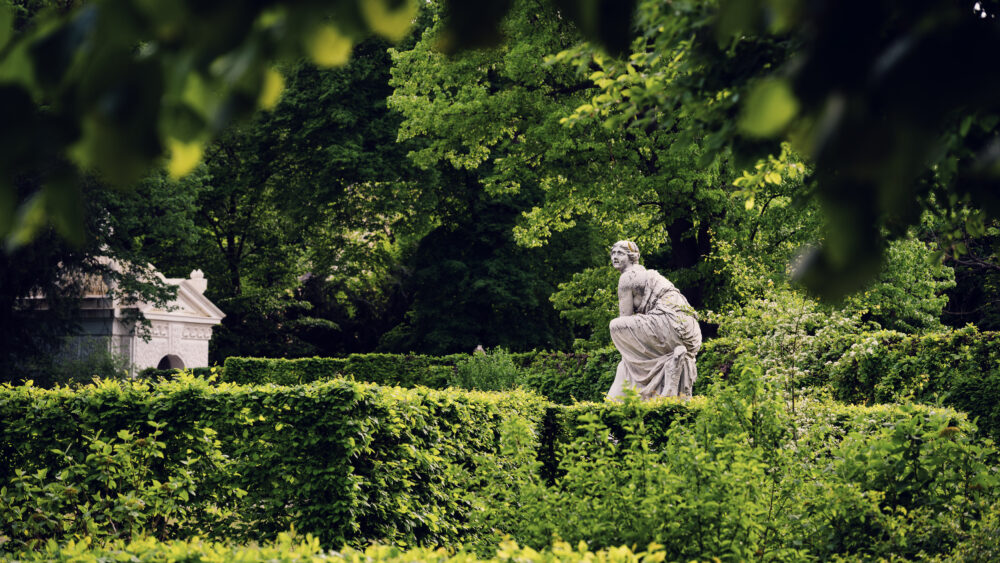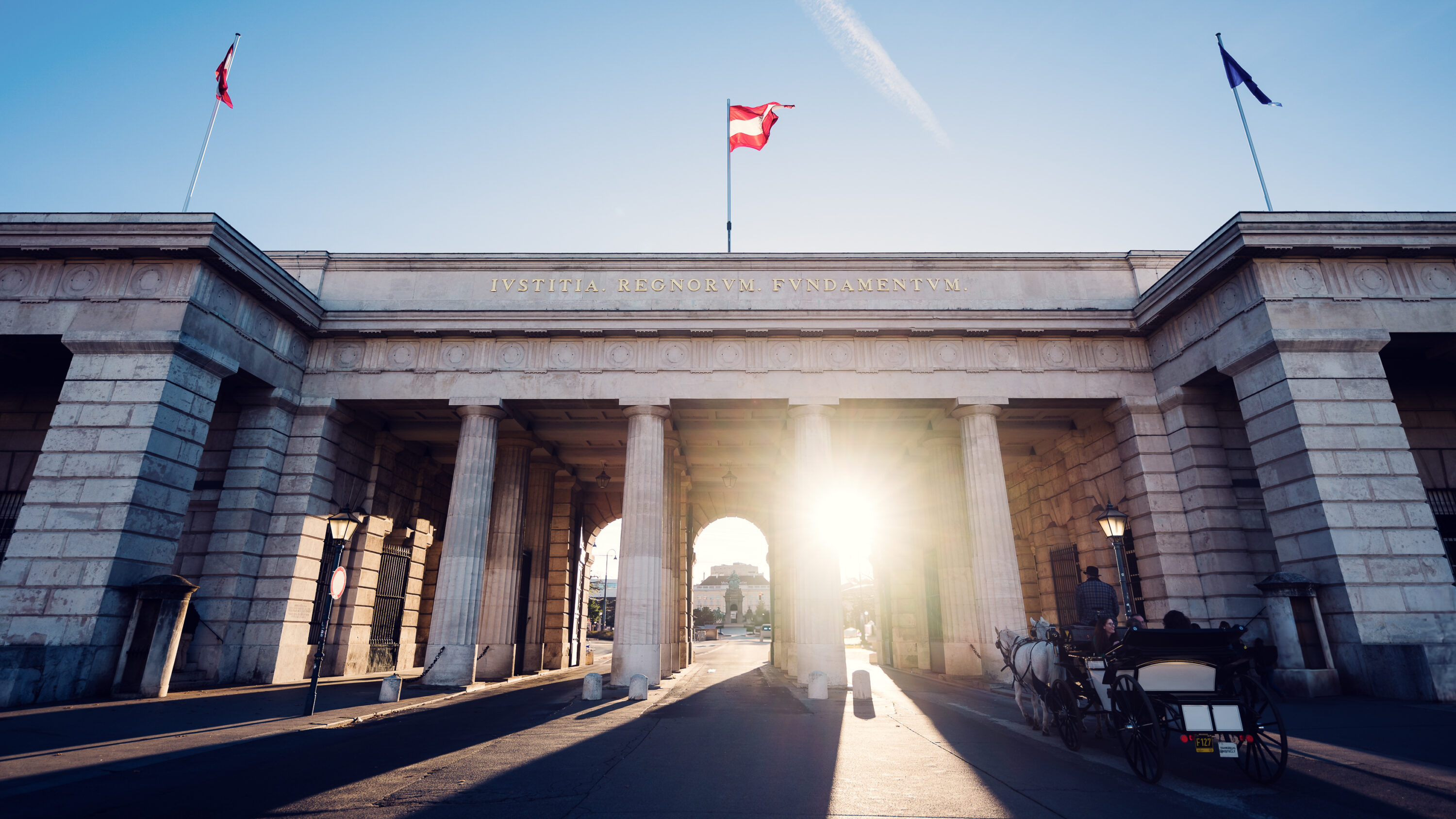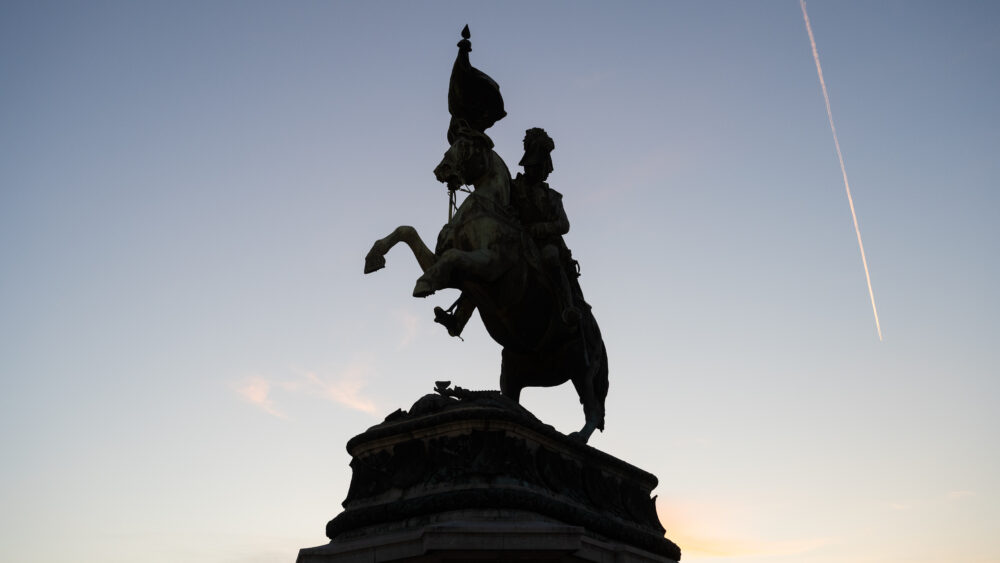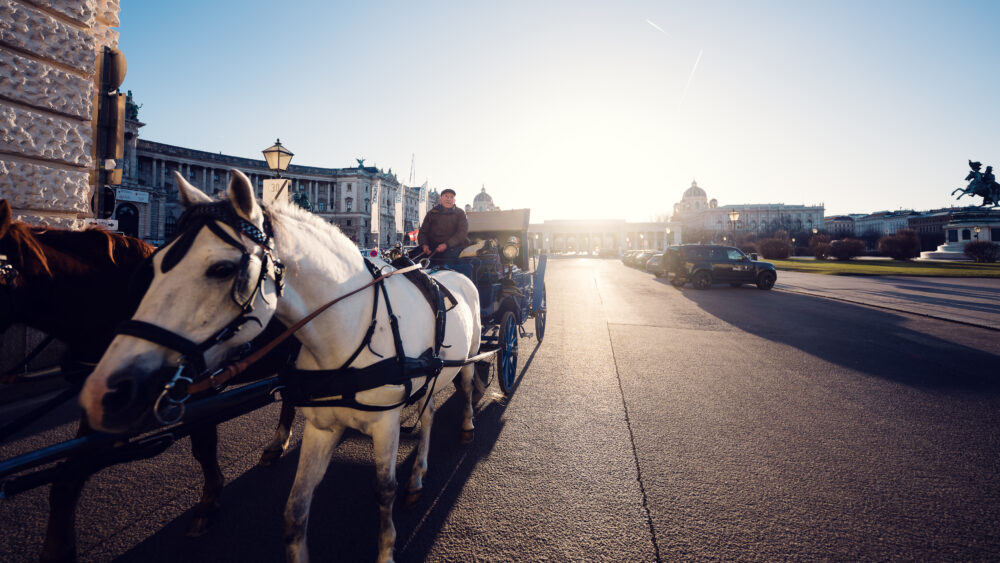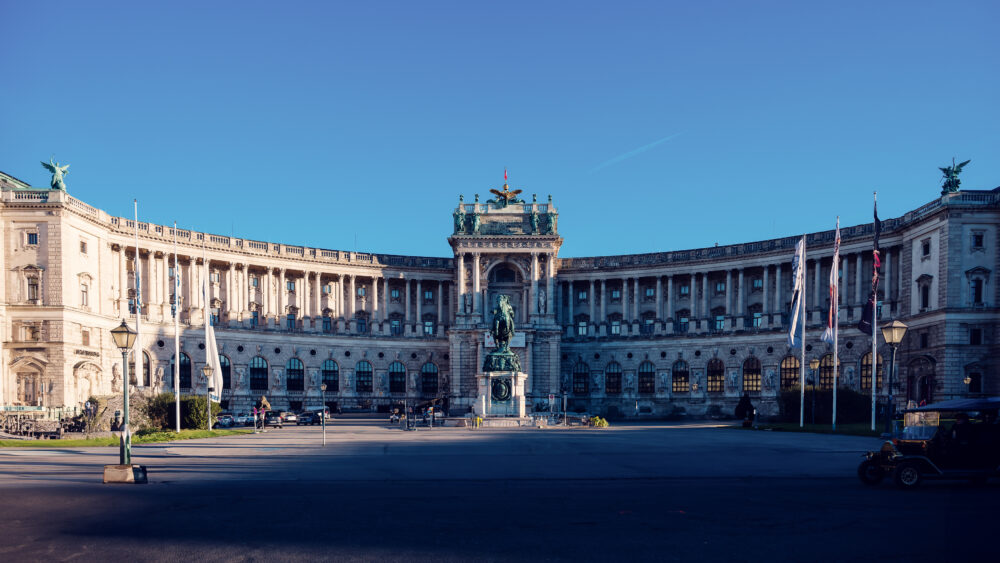The History of Gloriette: A Symbol of Imperial Grandeur
The Gloriette at Schönbrunn Palace is a prominent example of Vienna’s architectural heritage and a lasting symbol of the Habsburg Empire’s power. Positioned above the palace gardens, it stands as a reflection of imperial prestige, with a history tied to the ambitions of Empress Maria Theresa and the artistry of Johann Ferdinand Hetzendorf von Hohenberg.
Commissioned by Empress Maria Theresa
In 1775, Empress Maria Theresa commissioned the Gloriette to commemorate Austria’s military victories over Prussia and France. Schönbrunn Palace had already become the Habsburgs’ primary summer residence, and Maria Theresa wanted a structure that would reflect the empire’s strength. The Gloriette was meant as an ornamental feature and as a testament to Habsburg dominance.

Designed by Johann Ferdinand Hetzendorf von Hohenberg
The design fell to Johann Ferdinand Hetzendorf von Hohenberg, a renowned Austrian architect known for his neoclassical works. He envisioned the Gloriette as a triumphal structure, inspired by Roman arches, that would serve as both an observation point and a symbol of imperial might. The elegant pavilion features tall columns, arched windows, and intricate stonework, crowned with a majestic eagle clutching the imperial crown—a clear statement of Habsburg power.
A Venue for Royal Gatherings
Beyond its symbolic role, the Gloriette was a gathering place for the Habsburg court. It hosted lavish banquets, concerts, and events, often serving as the backdrop for breakfast receptions during the warmer months. These gatherings allowed the imperial family and their guests to enjoy panoramic views of the palace gardens and the surrounding landscape, offering a serene setting for their social events.
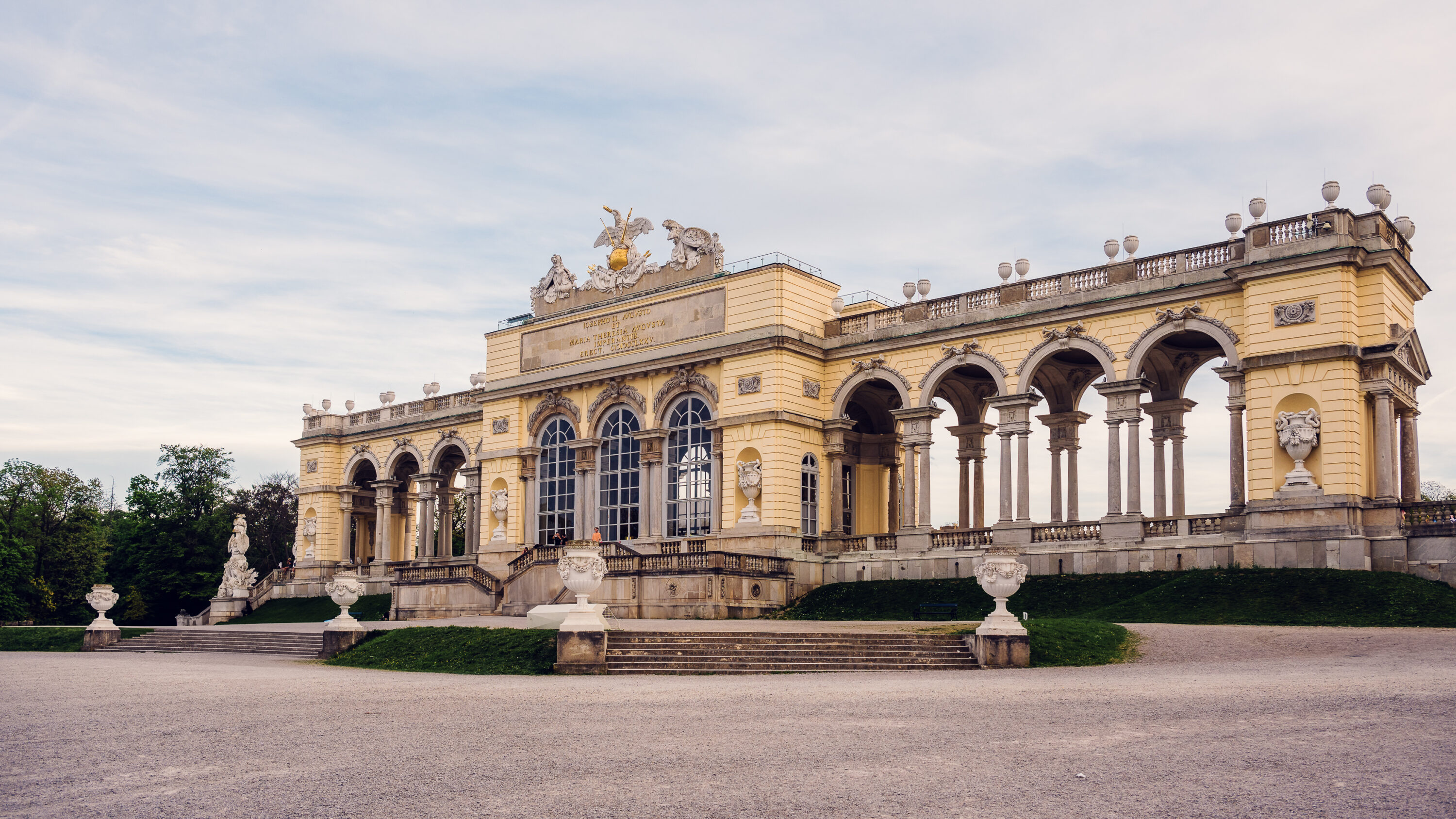
World War II and Restoration
During World War II, the Gloriette was damaged in bombings. Recognizing its cultural importance, Austria undertook extensive restoration work in 1947, followed by further efforts in the 1990s to preserve the structure. Today, the Gloriette is home to the Gloriette Café, where visitors can enjoy traditional Viennese coffee while taking in the views from its terrace.
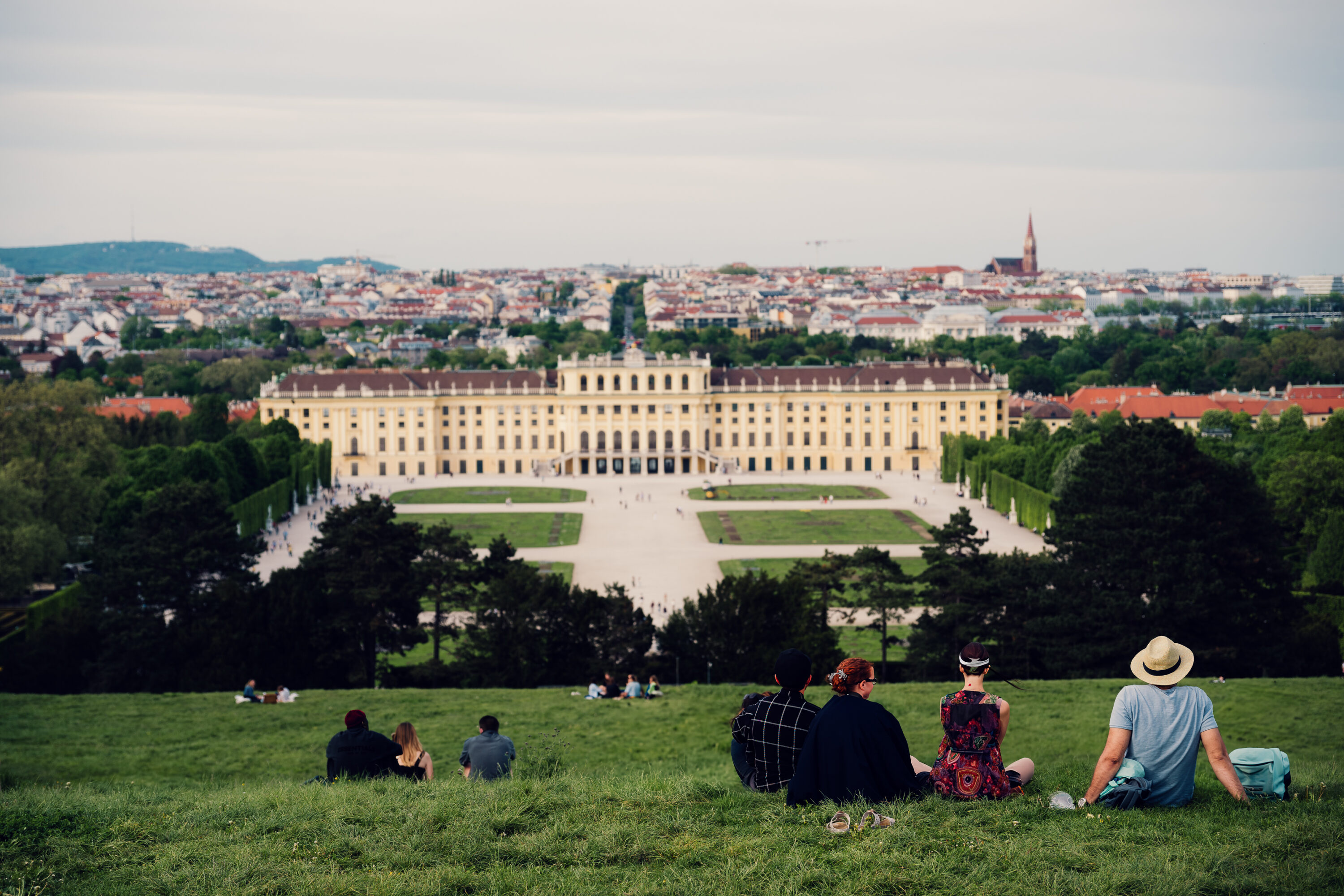
Today, the Gloriette has been repurposed, housing the Gloriette Café inside the central pavilion. Visitors can sit and enjoy a traditional Viennese coffee and pastry while basking in the panoramic views from the café’s outdoor terrace. The rooftop, which was originally a viewing platform for the imperial family, is now open to the public, offering stunning views of Vienna’s cityscape, the Vienna Woods, and even the Danube River on a clear day.
Gloriette in Popular Culture
Over the centuries, Gloriette has remained a symbol of Vienna’s imperial past and continues to attract visitors from around the globe. Its picturesque setting has made it a popular spot for filmmakers, photographers, and artists who are drawn to the structure’s symmetry, its elegant silhouette against the skyline, and its commanding view of the palace and city below.
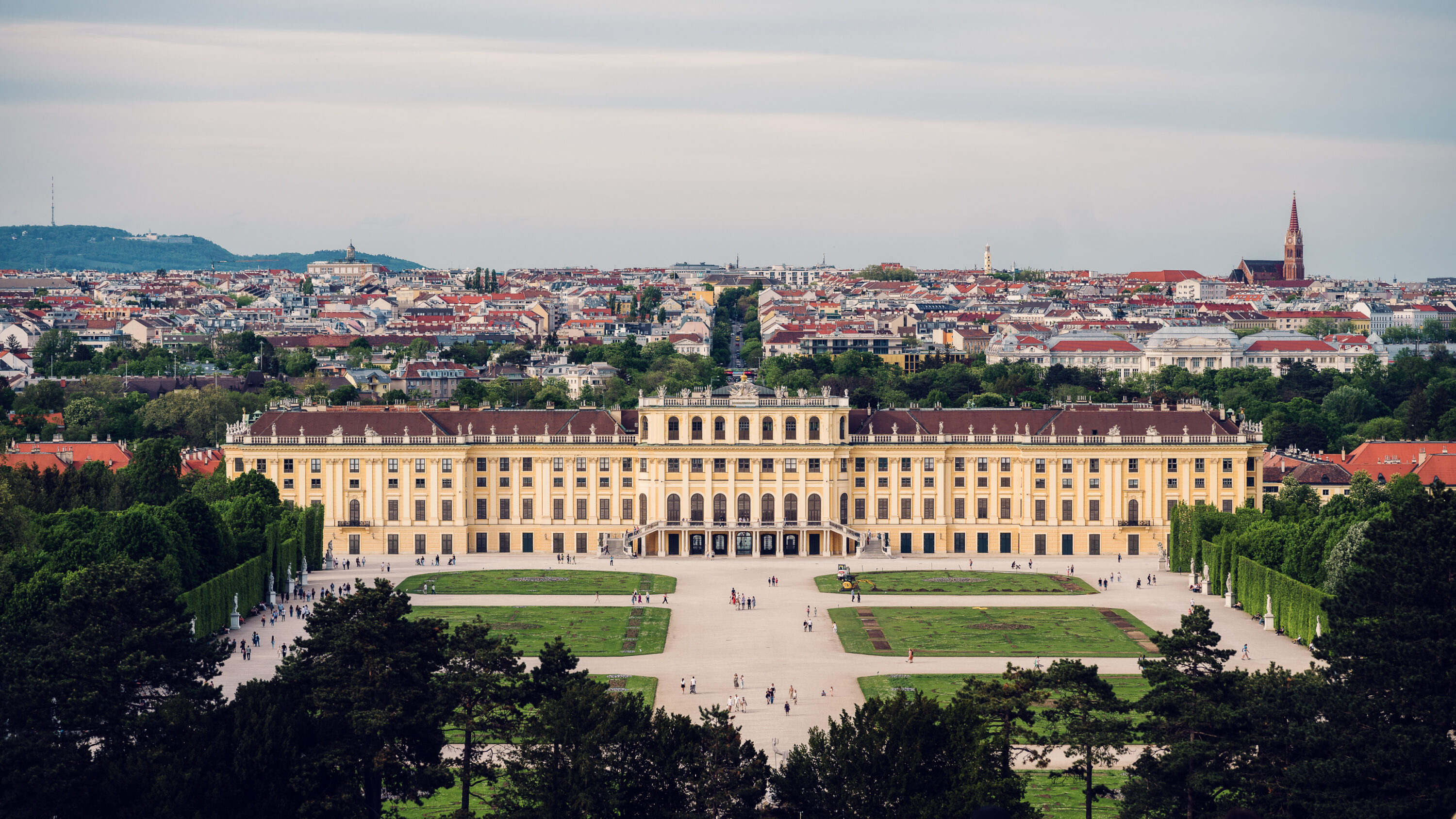
Moreover, Gloriette’s serene atmosphere and striking beauty have made it a popular location for weddings, photo shoots, and special events. The café inside provides a cozy yet luxurious ambiance, perfect for those looking to experience a taste of Viennese history while enjoying a moment of quiet reflection.
A Timeless Landmark
Today, the Gloriette is one of the most visited and beloved parts of the Schönbrunn Palace complex, offering visitors a place to relax, reflect, and admire the beauty of both the imperial architecture and the natural world that surrounds it.

